Quick filters:
Cell labelled diagram Stock Photos and Images
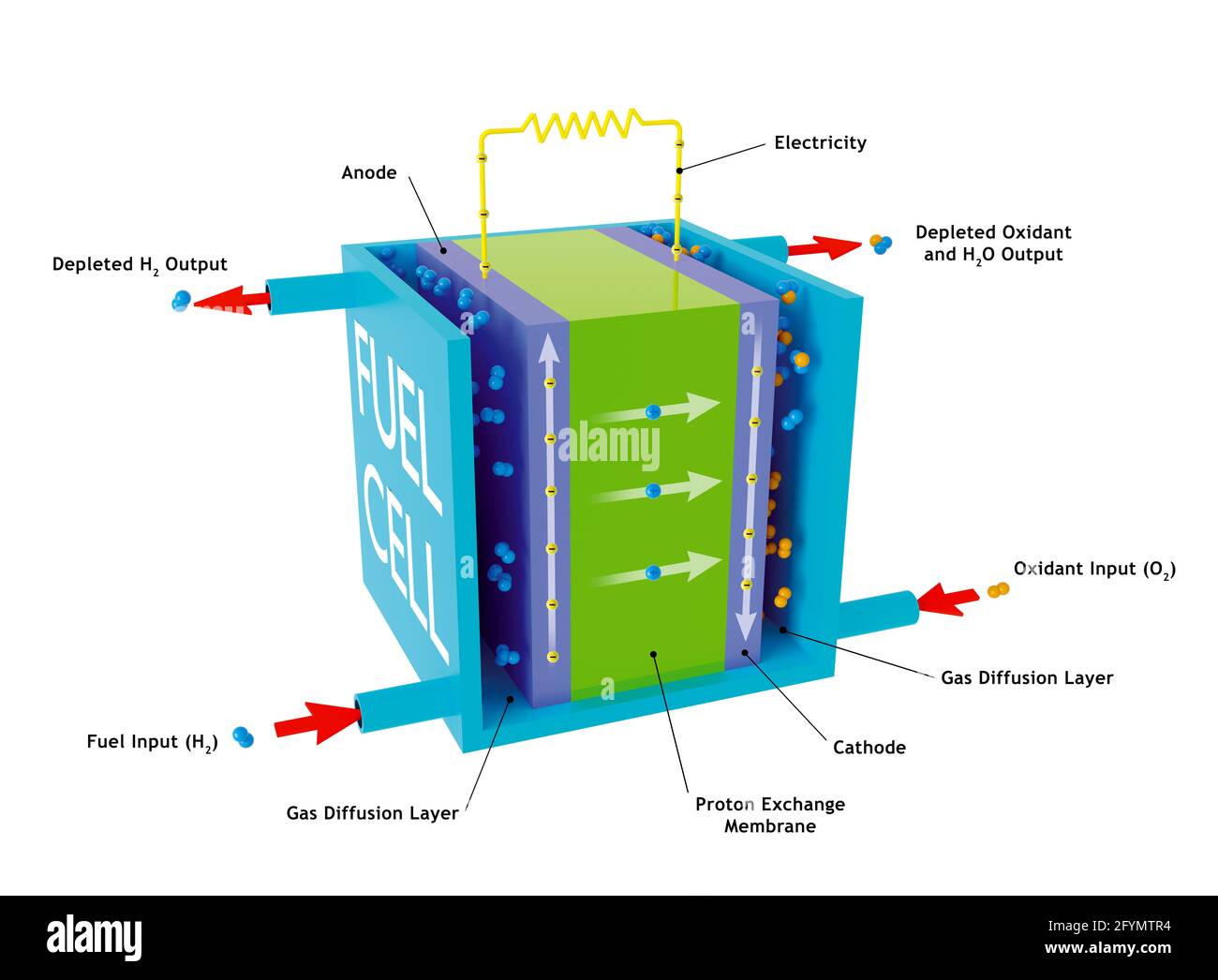 Hydrogen fuel cell, illustration Stock Photohttps://www.alamy.com/image-license-details/?v=1https://www.alamy.com/hydrogen-fuel-cell-illustration-image430103048.html
Hydrogen fuel cell, illustration Stock Photohttps://www.alamy.com/image-license-details/?v=1https://www.alamy.com/hydrogen-fuel-cell-illustration-image430103048.htmlRF2FYMTR4–Hydrogen fuel cell, illustration
 Mitochondria diagram Stock Vectorhttps://www.alamy.com/image-license-details/?v=1https://www.alamy.com/mitochondria-diagram-image546987844.html
Mitochondria diagram Stock Vectorhttps://www.alamy.com/image-license-details/?v=1https://www.alamy.com/mitochondria-diagram-image546987844.htmlRF2PNWCG4–Mitochondria diagram
 Multi-junction solar cell, illustration Stock Photohttps://www.alamy.com/image-license-details/?v=1https://www.alamy.com/multi-junction-solar-cell-illustration-image426107324.html
Multi-junction solar cell, illustration Stock Photohttps://www.alamy.com/image-license-details/?v=1https://www.alamy.com/multi-junction-solar-cell-illustration-image426107324.htmlRF2FN6T6M–Multi-junction solar cell, illustration
 Labelled diagram of COVID-19 cell structure showing spike glycoprotein, membrane protein, envelope, RNA. 3d illustration schematic of coronavirus. Stock Photohttps://www.alamy.com/image-license-details/?v=1https://www.alamy.com/labelled-diagram-of-covid-19-cell-structure-showing-spike-glycoprotein-membrane-protein-envelope-rna-3d-illustration-schematic-of-coronavirus-image351402211.html
Labelled diagram of COVID-19 cell structure showing spike glycoprotein, membrane protein, envelope, RNA. 3d illustration schematic of coronavirus. Stock Photohttps://www.alamy.com/image-license-details/?v=1https://www.alamy.com/labelled-diagram-of-covid-19-cell-structure-showing-spike-glycoprotein-membrane-protein-envelope-rna-3d-illustration-schematic-of-coronavirus-image351402211.htmlRF2BBKN2Y–Labelled diagram of COVID-19 cell structure showing spike glycoprotein, membrane protein, envelope, RNA. 3d illustration schematic of coronavirus.
 Nerve cell anatomy, illustration Stock Photohttps://www.alamy.com/image-license-details/?v=1https://www.alamy.com/nerve-cell-anatomy-illustration-image332250633.html
Nerve cell anatomy, illustration Stock Photohttps://www.alamy.com/image-license-details/?v=1https://www.alamy.com/nerve-cell-anatomy-illustration-image332250633.htmlRF2A8F921–Nerve cell anatomy, illustration
 Simple electrochemical or galvanic cell. The Daniell cell. Stock Photohttps://www.alamy.com/image-license-details/?v=1https://www.alamy.com/stock-photo-simple-electrochemical-or-galvanic-cell-the-daniell-cell-74405627.html
Simple electrochemical or galvanic cell. The Daniell cell. Stock Photohttps://www.alamy.com/image-license-details/?v=1https://www.alamy.com/stock-photo-simple-electrochemical-or-galvanic-cell-the-daniell-cell-74405627.htmlRFE91D3R–Simple electrochemical or galvanic cell. The Daniell cell.
 Plant parenchyma structure, illustration Stock Photohttps://www.alamy.com/image-license-details/?v=1https://www.alamy.com/plant-parenchyma-structure-illustration-image529052311.html
Plant parenchyma structure, illustration Stock Photohttps://www.alamy.com/image-license-details/?v=1https://www.alamy.com/plant-parenchyma-structure-illustration-image529052311.htmlRF2NMMBHB–Plant parenchyma structure, illustration
 stentor Stock Vectorhttps://www.alamy.com/image-license-details/?v=1https://www.alamy.com/stentor-image549569957.html
stentor Stock Vectorhttps://www.alamy.com/image-license-details/?v=1https://www.alamy.com/stentor-image549569957.htmlRF2PX322D–stentor
 Bacteriophage, illustration Stock Photohttps://www.alamy.com/image-license-details/?v=1https://www.alamy.com/bacteriophage-illustration-image595938695.html
Bacteriophage, illustration Stock Photohttps://www.alamy.com/image-license-details/?v=1https://www.alamy.com/bacteriophage-illustration-image595938695.htmlRF2WHF9TR–Bacteriophage, illustration
 Diagram of cell division, with the parts labelled, chr, chromosomes forming an equatorial plate; and cs, centrosome, vintage line drawing or engraving Stock Vectorhttps://www.alamy.com/image-license-details/?v=1https://www.alamy.com/diagram-of-cell-division-with-the-parts-labelled-chr-chromosomes-forming-an-equatorial-plate-and-cs-centrosome-vintage-line-drawing-or-engraving-image348659866.html
Diagram of cell division, with the parts labelled, chr, chromosomes forming an equatorial plate; and cs, centrosome, vintage line drawing or engraving Stock Vectorhttps://www.alamy.com/image-license-details/?v=1https://www.alamy.com/diagram-of-cell-division-with-the-parts-labelled-chr-chromosomes-forming-an-equatorial-plate-and-cs-centrosome-vintage-line-drawing-or-engraving-image348659866.htmlRF2B76R62–Diagram of cell division, with the parts labelled, chr, chromosomes forming an equatorial plate; and cs, centrosome, vintage line drawing or engraving
 Nerve cell, illustration Stock Photohttps://www.alamy.com/image-license-details/?v=1https://www.alamy.com/nerve-cell-illustration-image529051722.html
Nerve cell, illustration Stock Photohttps://www.alamy.com/image-license-details/?v=1https://www.alamy.com/nerve-cell-illustration-image529051722.htmlRF2NMMATA–Nerve cell, illustration
 Diagram of a neuron, with its parts labelled as, 'A', representing axon arising from the cell-body and branching at its termination; 'D', representing Stock Vectorhttps://www.alamy.com/image-license-details/?v=1https://www.alamy.com/diagram-of-a-neuron-with-its-parts-labelled-as-a-representing-axon-arising-from-the-cell-body-and-branching-at-its-termination-d-representing-image359323478.html
Diagram of a neuron, with its parts labelled as, 'A', representing axon arising from the cell-body and branching at its termination; 'D', representing Stock Vectorhttps://www.alamy.com/image-license-details/?v=1https://www.alamy.com/diagram-of-a-neuron-with-its-parts-labelled-as-a-representing-axon-arising-from-the-cell-body-and-branching-at-its-termination-d-representing-image359323478.htmlRF2BTGGNA–Diagram of a neuron, with its parts labelled as, 'A', representing axon arising from the cell-body and branching at its termination; 'D', representing
 Animal cell, illustration. Animal cells are eukaryotic cells (whose nucleus is bound by a nuclear membrane). Stock Photohttps://www.alamy.com/image-license-details/?v=1https://www.alamy.com/animal-cell-illustration-animal-cells-are-eukaryotic-cells-whose-nucleus-is-bound-by-a-nuclear-membrane-image618634114.html
Animal cell, illustration. Animal cells are eukaryotic cells (whose nucleus is bound by a nuclear membrane). Stock Photohttps://www.alamy.com/image-license-details/?v=1https://www.alamy.com/animal-cell-illustration-animal-cells-are-eukaryotic-cells-whose-nucleus-is-bound-by-a-nuclear-membrane-image618634114.htmlRF2XXD63E–Animal cell, illustration. Animal cells are eukaryotic cells (whose nucleus is bound by a nuclear membrane).
 Labeled diagrams of typical animal and plant cells with editable layers. Stock Photohttps://www.alamy.com/image-license-details/?v=1https://www.alamy.com/stock-photo-labeled-diagrams-of-typical-animal-and-plant-cells-with-editable-layers-74405629.html
Labeled diagrams of typical animal and plant cells with editable layers. Stock Photohttps://www.alamy.com/image-license-details/?v=1https://www.alamy.com/stock-photo-labeled-diagrams-of-typical-animal-and-plant-cells-with-editable-layers-74405629.htmlRFE91D3W–Labeled diagrams of typical animal and plant cells with editable layers.
 Structure of alveolus of human lungs. Labelled diagram of the alveolus in the lungs showing gaseous exchange. Pulmonary alveolus. alveoli and capillar Stock Vectorhttps://www.alamy.com/image-license-details/?v=1https://www.alamy.com/structure-of-alveolus-of-human-lungs-labelled-diagram-of-the-alveolus-in-the-lungs-showing-gaseous-exchange-pulmonary-alveolus-alveoli-and-capillar-image551608789.html
Structure of alveolus of human lungs. Labelled diagram of the alveolus in the lungs showing gaseous exchange. Pulmonary alveolus. alveoli and capillar Stock Vectorhttps://www.alamy.com/image-license-details/?v=1https://www.alamy.com/structure-of-alveolus-of-human-lungs-labelled-diagram-of-the-alveolus-in-the-lungs-showing-gaseous-exchange-pulmonary-alveolus-alveoli-and-capillar-image551608789.htmlRF2R1BXHW–Structure of alveolus of human lungs. Labelled diagram of the alveolus in the lungs showing gaseous exchange. Pulmonary alveolus. alveoli and capillar
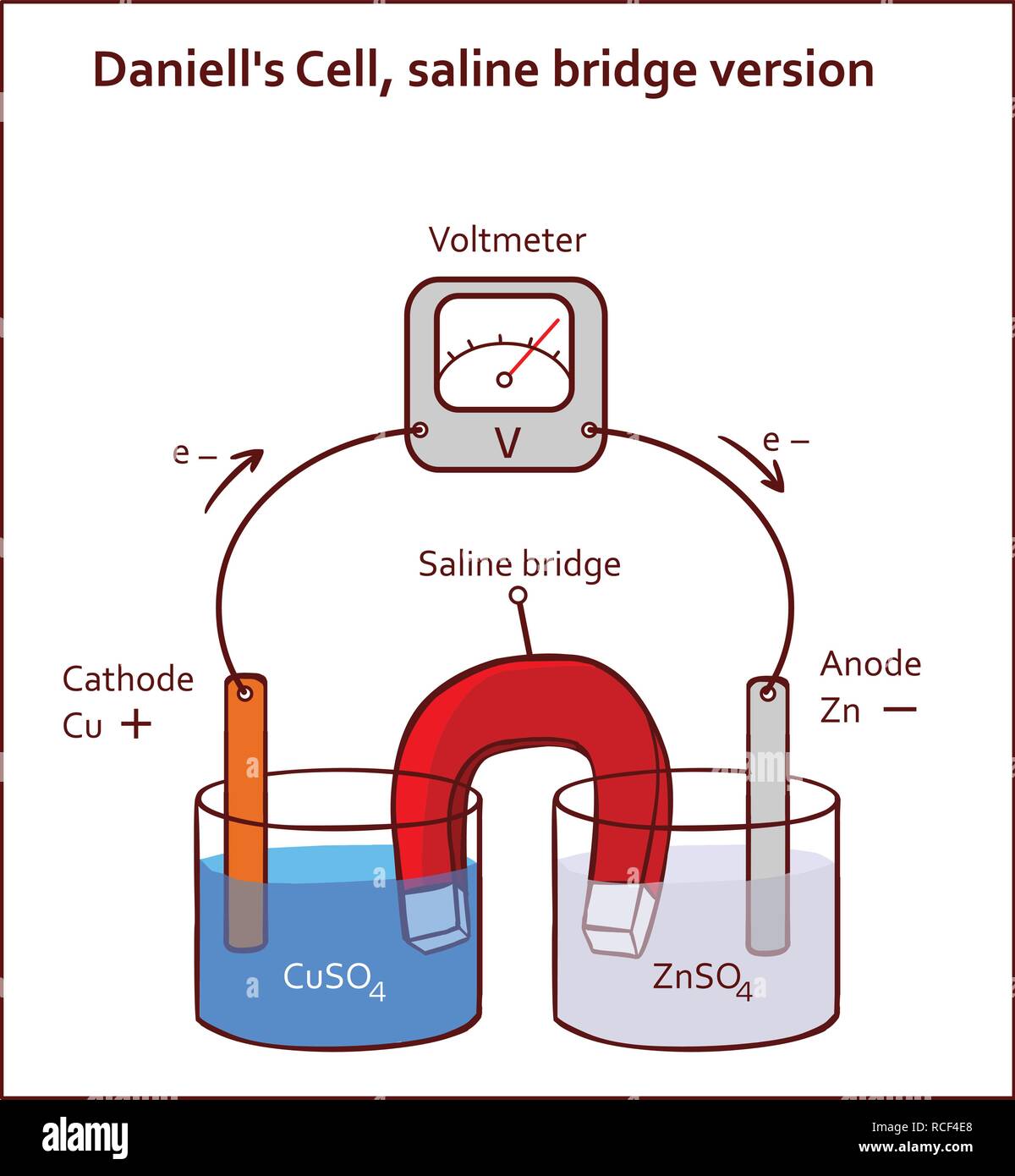 Daniell's Cell, saline bridge version vector illustration Stock Vectorhttps://www.alamy.com/image-license-details/?v=1https://www.alamy.com/daniells-cell-saline-bridge-version-vector-illustration-image231443472.html
Daniell's Cell, saline bridge version vector illustration Stock Vectorhttps://www.alamy.com/image-license-details/?v=1https://www.alamy.com/daniells-cell-saline-bridge-version-vector-illustration-image231443472.htmlRFRCF4E8–Daniell's Cell, saline bridge version vector illustration
 Animal Cell Diagram Stock Photohttps://www.alamy.com/image-license-details/?v=1https://www.alamy.com/stock-photo-animal-cell-diagram-135012492.html
Animal Cell Diagram Stock Photohttps://www.alamy.com/image-license-details/?v=1https://www.alamy.com/stock-photo-animal-cell-diagram-135012492.htmlRMHRJ9PM–Animal Cell Diagram
 Labelled diagram of the industrial manufacture of sodium hydroxide in the flowing mercury cell in vector format. Stock Vectorhttps://www.alamy.com/image-license-details/?v=1https://www.alamy.com/stock-photo-labelled-diagram-of-the-industrial-manufacture-of-sodium-hydroxide-97862706.html
Labelled diagram of the industrial manufacture of sodium hydroxide in the flowing mercury cell in vector format. Stock Vectorhttps://www.alamy.com/image-license-details/?v=1https://www.alamy.com/stock-photo-labelled-diagram-of-the-industrial-manufacture-of-sodium-hydroxide-97862706.htmlRFFK60TJ–Labelled diagram of the industrial manufacture of sodium hydroxide in the flowing mercury cell in vector format.
 Whole blood consists of red blood cells (erythrocytes), white blood cells (leukocytes), platelets (thrombocytes), and plasma. Stock Vectorhttps://www.alamy.com/image-license-details/?v=1https://www.alamy.com/whole-blood-consists-of-red-blood-cells-erythrocytes-white-blood-cells-leukocytes-platelets-thrombocytes-and-plasma-image554294589.html
Whole blood consists of red blood cells (erythrocytes), white blood cells (leukocytes), platelets (thrombocytes), and plasma. Stock Vectorhttps://www.alamy.com/image-license-details/?v=1https://www.alamy.com/whole-blood-consists-of-red-blood-cells-erythrocytes-white-blood-cells-leukocytes-platelets-thrombocytes-and-plasma-image554294589.htmlRF2R5P8B9–Whole blood consists of red blood cells (erythrocytes), white blood cells (leukocytes), platelets (thrombocytes), and plasma.
 Animal cell anatomy infographics with detailed educative diagram and labelled elements realistic vector illustration Stock Vectorhttps://www.alamy.com/image-license-details/?v=1https://www.alamy.com/animal-cell-anatomy-infographics-with-detailed-educative-diagram-and-labelled-elements-realistic-vector-illustration-image471043695.html
Animal cell anatomy infographics with detailed educative diagram and labelled elements realistic vector illustration Stock Vectorhttps://www.alamy.com/image-license-details/?v=1https://www.alamy.com/animal-cell-anatomy-infographics-with-detailed-educative-diagram-and-labelled-elements-realistic-vector-illustration-image471043695.htmlRF2JA9W13–Animal cell anatomy infographics with detailed educative diagram and labelled elements realistic vector illustration
 Animal cell anatomy infographics with detailed educative diagram and labelled elements realistic vector illustration Stock Vectorhttps://www.alamy.com/image-license-details/?v=1https://www.alamy.com/animal-cell-anatomy-infographics-with-detailed-educative-diagram-and-labelled-elements-realistic-vector-illustration-image471323345.html
Animal cell anatomy infographics with detailed educative diagram and labelled elements realistic vector illustration Stock Vectorhttps://www.alamy.com/image-license-details/?v=1https://www.alamy.com/animal-cell-anatomy-infographics-with-detailed-educative-diagram-and-labelled-elements-realistic-vector-illustration-image471323345.htmlRF2JAPHMH–Animal cell anatomy infographics with detailed educative diagram and labelled elements realistic vector illustration
 Parts of the Cell, columnar epithelial and goblet cell, Human cell anatomy Stock Vectorhttps://www.alamy.com/image-license-details/?v=1https://www.alamy.com/parts-of-the-cell-columnar-epithelial-and-goblet-cell-human-cell-anatomy-image634082990.html
Parts of the Cell, columnar epithelial and goblet cell, Human cell anatomy Stock Vectorhttps://www.alamy.com/image-license-details/?v=1https://www.alamy.com/parts-of-the-cell-columnar-epithelial-and-goblet-cell-human-cell-anatomy-image634082990.htmlRF2YRGY92–Parts of the Cell, columnar epithelial and goblet cell, Human cell anatomy
 . The Biological bulletin. Biology; Zoology; Biology; Marine Biology. VISUALIZING CYTOPLASMIC CALCIUM 15 Polarizing light. Excitation beam Figure 1. Schematic diagram of polarizing fucus zygote showing method of excitation of fluorescentlv labelled cell. gradients in polarized and polarizing zygotes using the fluorescent Ca2+ indicator fura-2. The spectral properties of fura-2 are such that the ratio of fluorescence following excitation with 350 (or 360) and 385 nm light is calcium- dependent. (Grynkievicz el al, 1985; Tsien el ai. 1985; Cobbold and Rink. 1987). Materials and Methods Zygote gr Stock Photohttps://www.alamy.com/image-license-details/?v=1https://www.alamy.com/the-biological-bulletin-biology-zoology-biology-marine-biology-visualizing-cytoplasmic-calcium-15-polarizing-light-excitation-beam-figure-1-schematic-diagram-of-polarizing-fucus-zygote-showing-method-of-excitation-of-fluorescentlv-labelled-cell-gradients-in-polarized-and-polarizing-zygotes-using-the-fluorescent-ca2-indicator-fura-2-the-spectral-properties-of-fura-2-are-such-that-the-ratio-of-fluorescence-following-excitation-with-350-or-360-and-385-nm-light-is-calcium-dependent-grynkievicz-el-al-1985-tsien-el-ai-1985-cobbold-and-rink-1987-materials-and-methods-zygote-gr-image234616071.html
. The Biological bulletin. Biology; Zoology; Biology; Marine Biology. VISUALIZING CYTOPLASMIC CALCIUM 15 Polarizing light. Excitation beam Figure 1. Schematic diagram of polarizing fucus zygote showing method of excitation of fluorescentlv labelled cell. gradients in polarized and polarizing zygotes using the fluorescent Ca2+ indicator fura-2. The spectral properties of fura-2 are such that the ratio of fluorescence following excitation with 350 (or 360) and 385 nm light is calcium- dependent. (Grynkievicz el al, 1985; Tsien el ai. 1985; Cobbold and Rink. 1987). Materials and Methods Zygote gr Stock Photohttps://www.alamy.com/image-license-details/?v=1https://www.alamy.com/the-biological-bulletin-biology-zoology-biology-marine-biology-visualizing-cytoplasmic-calcium-15-polarizing-light-excitation-beam-figure-1-schematic-diagram-of-polarizing-fucus-zygote-showing-method-of-excitation-of-fluorescentlv-labelled-cell-gradients-in-polarized-and-polarizing-zygotes-using-the-fluorescent-ca2-indicator-fura-2-the-spectral-properties-of-fura-2-are-such-that-the-ratio-of-fluorescence-following-excitation-with-350-or-360-and-385-nm-light-is-calcium-dependent-grynkievicz-el-al-1985-tsien-el-ai-1985-cobbold-and-rink-1987-materials-and-methods-zygote-gr-image234616071.htmlRMRHKK5B–. The Biological bulletin. Biology; Zoology; Biology; Marine Biology. VISUALIZING CYTOPLASMIC CALCIUM 15 Polarizing light. Excitation beam Figure 1. Schematic diagram of polarizing fucus zygote showing method of excitation of fluorescentlv labelled cell. gradients in polarized and polarizing zygotes using the fluorescent Ca2+ indicator fura-2. The spectral properties of fura-2 are such that the ratio of fluorescence following excitation with 350 (or 360) and 385 nm light is calcium- dependent. (Grynkievicz el al, 1985; Tsien el ai. 1985; Cobbold and Rink. 1987). Materials and Methods Zygote gr
 Structure of an animal cell, illustration. Animal cells are eukaryotic cells, which are cells whose nucleus is bound by a nuclear membrane. Stock Photohttps://www.alamy.com/image-license-details/?v=1https://www.alamy.com/structure-of-an-animal-cell-illustration-animal-cells-are-eukaryotic-cells-which-are-cells-whose-nucleus-is-bound-by-a-nuclear-membrane-image618634296.html
Structure of an animal cell, illustration. Animal cells are eukaryotic cells, which are cells whose nucleus is bound by a nuclear membrane. Stock Photohttps://www.alamy.com/image-license-details/?v=1https://www.alamy.com/structure-of-an-animal-cell-illustration-animal-cells-are-eukaryotic-cells-which-are-cells-whose-nucleus-is-bound-by-a-nuclear-membrane-image618634296.htmlRF2XXD6A0–Structure of an animal cell, illustration. Animal cells are eukaryotic cells, which are cells whose nucleus is bound by a nuclear membrane.
 Daniell's Cell, saline bridge version vector illustration Stock Vectorhttps://www.alamy.com/image-license-details/?v=1https://www.alamy.com/daniells-cell-saline-bridge-version-vector-illustration-image231443448.html
Daniell's Cell, saline bridge version vector illustration Stock Vectorhttps://www.alamy.com/image-license-details/?v=1https://www.alamy.com/daniells-cell-saline-bridge-version-vector-illustration-image231443448.htmlRFRCF4DC–Daniell's Cell, saline bridge version vector illustration
 Fully labelled diagram of the alveolus in the lungs showing gaseous exchange. Stock Vectorhttps://www.alamy.com/image-license-details/?v=1https://www.alamy.com/stock-photo-fully-labelled-diagram-of-the-alveolus-in-the-lungs-showing-gaseous-94401293.html
Fully labelled diagram of the alveolus in the lungs showing gaseous exchange. Stock Vectorhttps://www.alamy.com/image-license-details/?v=1https://www.alamy.com/stock-photo-fully-labelled-diagram-of-the-alveolus-in-the-lungs-showing-gaseous-94401293.htmlRFFDG9PN–Fully labelled diagram of the alveolus in the lungs showing gaseous exchange.
 Human cell anatomy realistic infographics with labelled educational diagram on white background vector illustration Stock Vectorhttps://www.alamy.com/image-license-details/?v=1https://www.alamy.com/human-cell-anatomy-realistic-infographics-with-labelled-educational-diagram-on-white-background-vector-illustration-image471043297.html
Human cell anatomy realistic infographics with labelled educational diagram on white background vector illustration Stock Vectorhttps://www.alamy.com/image-license-details/?v=1https://www.alamy.com/human-cell-anatomy-realistic-infographics-with-labelled-educational-diagram-on-white-background-vector-illustration-image471043297.htmlRF2JA9TEW–Human cell anatomy realistic infographics with labelled educational diagram on white background vector illustration
 Human cell anatomy realistic infographics with labelled educational diagram on white background vector illustration Stock Vectorhttps://www.alamy.com/image-license-details/?v=1https://www.alamy.com/human-cell-anatomy-realistic-infographics-with-labelled-educational-diagram-on-white-background-vector-illustration-image471323461.html
Human cell anatomy realistic infographics with labelled educational diagram on white background vector illustration Stock Vectorhttps://www.alamy.com/image-license-details/?v=1https://www.alamy.com/human-cell-anatomy-realistic-infographics-with-labelled-educational-diagram-on-white-background-vector-illustration-image471323461.htmlRF2JAPHTN–Human cell anatomy realistic infographics with labelled educational diagram on white background vector illustration
 . The Biological bulletin. Biology; Zoology; Biology; Marine Biology. Excitation beam Figure 1. Schematic diagram of polarizing fucus zygote showing method of excitation of fluorescentlv labelled cell. gradients in polarized and polarizing zygotes using the fluorescent Ca2+ indicator fura-2. The spectral properties of fura-2 are such that the ratio of fluorescence following excitation with 350 (or 360) and 385 nm light is calcium- dependent. (Grynkievicz el al, 1985; Tsien el ai. 1985; Cobbold and Rink. 1987). Materials and Methods Zygote growth and dye loading Zygotes of Fucus serratus could Stock Photohttps://www.alamy.com/image-license-details/?v=1https://www.alamy.com/the-biological-bulletin-biology-zoology-biology-marine-biology-excitation-beam-figure-1-schematic-diagram-of-polarizing-fucus-zygote-showing-method-of-excitation-of-fluorescentlv-labelled-cell-gradients-in-polarized-and-polarizing-zygotes-using-the-fluorescent-ca2-indicator-fura-2-the-spectral-properties-of-fura-2-are-such-that-the-ratio-of-fluorescence-following-excitation-with-350-or-360-and-385-nm-light-is-calcium-dependent-grynkievicz-el-al-1985-tsien-el-ai-1985-cobbold-and-rink-1987-materials-and-methods-zygote-growth-and-dye-loading-zygotes-of-fucus-serratus-could-image234616061.html
. The Biological bulletin. Biology; Zoology; Biology; Marine Biology. Excitation beam Figure 1. Schematic diagram of polarizing fucus zygote showing method of excitation of fluorescentlv labelled cell. gradients in polarized and polarizing zygotes using the fluorescent Ca2+ indicator fura-2. The spectral properties of fura-2 are such that the ratio of fluorescence following excitation with 350 (or 360) and 385 nm light is calcium- dependent. (Grynkievicz el al, 1985; Tsien el ai. 1985; Cobbold and Rink. 1987). Materials and Methods Zygote growth and dye loading Zygotes of Fucus serratus could Stock Photohttps://www.alamy.com/image-license-details/?v=1https://www.alamy.com/the-biological-bulletin-biology-zoology-biology-marine-biology-excitation-beam-figure-1-schematic-diagram-of-polarizing-fucus-zygote-showing-method-of-excitation-of-fluorescentlv-labelled-cell-gradients-in-polarized-and-polarizing-zygotes-using-the-fluorescent-ca2-indicator-fura-2-the-spectral-properties-of-fura-2-are-such-that-the-ratio-of-fluorescence-following-excitation-with-350-or-360-and-385-nm-light-is-calcium-dependent-grynkievicz-el-al-1985-tsien-el-ai-1985-cobbold-and-rink-1987-materials-and-methods-zygote-growth-and-dye-loading-zygotes-of-fucus-serratus-could-image234616061.htmlRMRHKK51–. The Biological bulletin. Biology; Zoology; Biology; Marine Biology. Excitation beam Figure 1. Schematic diagram of polarizing fucus zygote showing method of excitation of fluorescentlv labelled cell. gradients in polarized and polarizing zygotes using the fluorescent Ca2+ indicator fura-2. The spectral properties of fura-2 are such that the ratio of fluorescence following excitation with 350 (or 360) and 385 nm light is calcium- dependent. (Grynkievicz el al, 1985; Tsien el ai. 1985; Cobbold and Rink. 1987). Materials and Methods Zygote growth and dye loading Zygotes of Fucus serratus could
 Cell components, illustration. A cell is made up of three parts: the cell membrane, the nucleus, and the cytoplasm that lies between the two. Stock Photohttps://www.alamy.com/image-license-details/?v=1https://www.alamy.com/cell-components-illustration-a-cell-is-made-up-of-three-parts-the-cell-membrane-the-nucleus-and-the-cytoplasm-that-lies-between-the-two-image618634084.html
Cell components, illustration. A cell is made up of three parts: the cell membrane, the nucleus, and the cytoplasm that lies between the two. Stock Photohttps://www.alamy.com/image-license-details/?v=1https://www.alamy.com/cell-components-illustration-a-cell-is-made-up-of-three-parts-the-cell-membrane-the-nucleus-and-the-cytoplasm-that-lies-between-the-two-image618634084.htmlRF2XXD62C–Cell components, illustration. A cell is made up of three parts: the cell membrane, the nucleus, and the cytoplasm that lies between the two.
 Battery driven by electrolyte concentrations porous vase version Stock Vectorhttps://www.alamy.com/image-license-details/?v=1https://www.alamy.com/battery-driven-by-electrolyte-concentrations-porous-vase-version-image231443426.html
Battery driven by electrolyte concentrations porous vase version Stock Vectorhttps://www.alamy.com/image-license-details/?v=1https://www.alamy.com/battery-driven-by-electrolyte-concentrations-porous-vase-version-image231443426.htmlRFRCF4CJ–Battery driven by electrolyte concentrations porous vase version
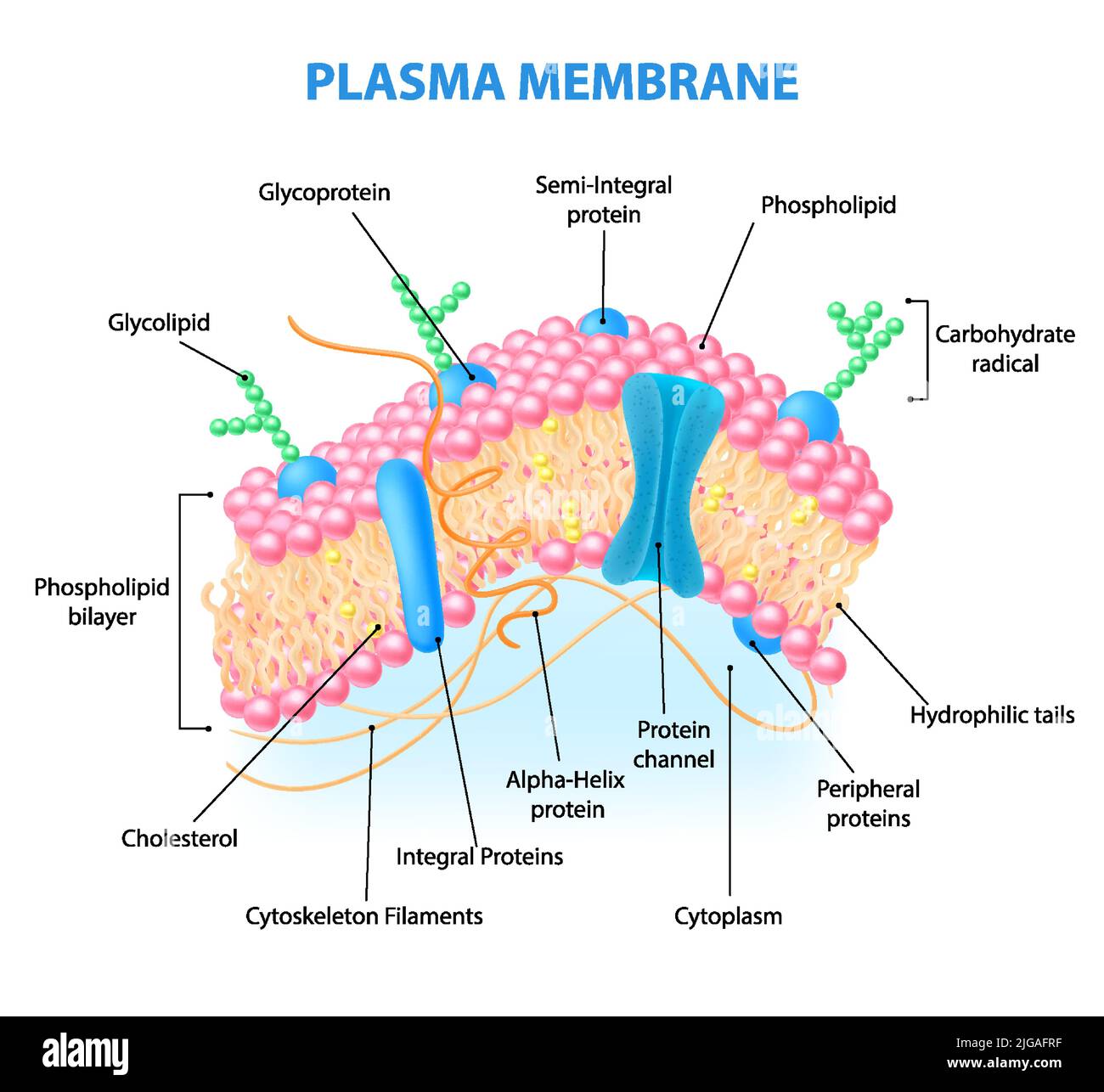 Realistic human cell anatomy infographics with diagram showing plasma membrane structure with labelled elements vector illustration Stock Vectorhttps://www.alamy.com/image-license-details/?v=1https://www.alamy.com/realistic-human-cell-anatomy-infographics-with-diagram-showing-plasma-membrane-structure-with-labelled-elements-vector-illustration-image474746371.html
Realistic human cell anatomy infographics with diagram showing plasma membrane structure with labelled elements vector illustration Stock Vectorhttps://www.alamy.com/image-license-details/?v=1https://www.alamy.com/realistic-human-cell-anatomy-infographics-with-diagram-showing-plasma-membrane-structure-with-labelled-elements-vector-illustration-image474746371.htmlRF2JGAFRF–Realistic human cell anatomy infographics with diagram showing plasma membrane structure with labelled elements vector illustration
 Mitosis in an animal cell, illustration. Mitosis is the process by which a cell replicates its chromosomes and then segregates them, producing two identical nuclei in preparation for cell division. Stock Photohttps://www.alamy.com/image-license-details/?v=1https://www.alamy.com/mitosis-in-an-animal-cell-illustration-mitosis-is-the-process-by-which-a-cell-replicates-its-chromosomes-and-then-segregates-them-producing-two-identical-nuclei-in-preparation-for-cell-division-image618634120.html
Mitosis in an animal cell, illustration. Mitosis is the process by which a cell replicates its chromosomes and then segregates them, producing two identical nuclei in preparation for cell division. Stock Photohttps://www.alamy.com/image-license-details/?v=1https://www.alamy.com/mitosis-in-an-animal-cell-illustration-mitosis-is-the-process-by-which-a-cell-replicates-its-chromosomes-and-then-segregates-them-producing-two-identical-nuclei-in-preparation-for-cell-division-image618634120.htmlRF2XXD63M–Mitosis in an animal cell, illustration. Mitosis is the process by which a cell replicates its chromosomes and then segregates them, producing two identical nuclei in preparation for cell division.
 Battery driven by electrolyte concentrations porous vase version Stock Vectorhttps://www.alamy.com/image-license-details/?v=1https://www.alamy.com/battery-driven-by-electrolyte-concentrations-porous-vase-version-image231443417.html
Battery driven by electrolyte concentrations porous vase version Stock Vectorhttps://www.alamy.com/image-license-details/?v=1https://www.alamy.com/battery-driven-by-electrolyte-concentrations-porous-vase-version-image231443417.htmlRFRCF4C9–Battery driven by electrolyte concentrations porous vase version
 Realistic human cell anatomy diagram infographic poster vector illustration Stock Vectorhttps://www.alamy.com/image-license-details/?v=1https://www.alamy.com/realistic-human-cell-anatomy-diagram-infographic-poster-vector-illustration-image474746318.html
Realistic human cell anatomy diagram infographic poster vector illustration Stock Vectorhttps://www.alamy.com/image-license-details/?v=1https://www.alamy.com/realistic-human-cell-anatomy-diagram-infographic-poster-vector-illustration-image474746318.htmlRF2JGAFNJ–Realistic human cell anatomy diagram infographic poster vector illustration
 Structure of a plant cell, illustration. Plant cells differ from animal cells in the presence of specialised organelles called plastids and having a rigid cell wall, large vacuole and plasmodesmata. Stock Photohttps://www.alamy.com/image-license-details/?v=1https://www.alamy.com/structure-of-a-plant-cell-illustration-plant-cells-differ-from-animal-cells-in-the-presence-of-specialised-organelles-called-plastids-and-having-a-rigid-cell-wall-large-vacuole-and-plasmodesmata-image618634276.html
Structure of a plant cell, illustration. Plant cells differ from animal cells in the presence of specialised organelles called plastids and having a rigid cell wall, large vacuole and plasmodesmata. Stock Photohttps://www.alamy.com/image-license-details/?v=1https://www.alamy.com/structure-of-a-plant-cell-illustration-plant-cells-differ-from-animal-cells-in-the-presence-of-specialised-organelles-called-plastids-and-having-a-rigid-cell-wall-large-vacuole-and-plasmodesmata-image618634276.htmlRF2XXD698–Structure of a plant cell, illustration. Plant cells differ from animal cells in the presence of specialised organelles called plastids and having a rigid cell wall, large vacuole and plasmodesmata.
 Vesicle transport in a cell, illustration. Vesicles move proteins between the Golgi apparatus and endoplasmic reticulum. The vesicles are coated with a coatomer (COP) protein that gives the vesicle an address to reach their destination. Stock Photohttps://www.alamy.com/image-license-details/?v=1https://www.alamy.com/vesicle-transport-in-a-cell-illustration-vesicles-move-proteins-between-the-golgi-apparatus-and-endoplasmic-reticulum-the-vesicles-are-coated-with-a-coatomer-cop-protein-that-gives-the-vesicle-an-address-to-reach-their-destination-image618634092.html
Vesicle transport in a cell, illustration. Vesicles move proteins between the Golgi apparatus and endoplasmic reticulum. The vesicles are coated with a coatomer (COP) protein that gives the vesicle an address to reach their destination. Stock Photohttps://www.alamy.com/image-license-details/?v=1https://www.alamy.com/vesicle-transport-in-a-cell-illustration-vesicles-move-proteins-between-the-golgi-apparatus-and-endoplasmic-reticulum-the-vesicles-are-coated-with-a-coatomer-cop-protein-that-gives-the-vesicle-an-address-to-reach-their-destination-image618634092.htmlRF2XXD62M–Vesicle transport in a cell, illustration. Vesicles move proteins between the Golgi apparatus and endoplasmic reticulum. The vesicles are coated with a coatomer (COP) protein that gives the vesicle an address to reach their destination.
 Cotranslational protein targeting, illustration. Protein targeting is the process of targeting newly synthesised proteins to endoplasmic Reticulum lumen so that the proteins can be sorted for their final destination in or outside the cell. In the above diagram, In the above diagram, Co-translational (while the protein is being synthesised) targeting is seen for a secretory protein where the protein translation occurs simultaneously to it entering ER lumen. Stock Photohttps://www.alamy.com/image-license-details/?v=1https://www.alamy.com/cotranslational-protein-targeting-illustration-protein-targeting-is-the-process-of-targeting-newly-synthesised-proteins-to-endoplasmic-reticulum-lumen-so-that-the-proteins-can-be-sorted-for-their-final-destination-in-or-outside-the-cell-in-the-above-diagram-in-the-above-diagram-co-translational-while-the-protein-is-being-synthesised-targeting-is-seen-for-a-secretory-protein-where-the-protein-translation-occurs-simultaneously-to-it-entering-er-lumen-image618634058.html
Cotranslational protein targeting, illustration. Protein targeting is the process of targeting newly synthesised proteins to endoplasmic Reticulum lumen so that the proteins can be sorted for their final destination in or outside the cell. In the above diagram, In the above diagram, Co-translational (while the protein is being synthesised) targeting is seen for a secretory protein where the protein translation occurs simultaneously to it entering ER lumen. Stock Photohttps://www.alamy.com/image-license-details/?v=1https://www.alamy.com/cotranslational-protein-targeting-illustration-protein-targeting-is-the-process-of-targeting-newly-synthesised-proteins-to-endoplasmic-reticulum-lumen-so-that-the-proteins-can-be-sorted-for-their-final-destination-in-or-outside-the-cell-in-the-above-diagram-in-the-above-diagram-co-translational-while-the-protein-is-being-synthesised-targeting-is-seen-for-a-secretory-protein-where-the-protein-translation-occurs-simultaneously-to-it-entering-er-lumen-image618634058.htmlRF2XXD61E–Cotranslational protein targeting, illustration. Protein targeting is the process of targeting newly synthesised proteins to endoplasmic Reticulum lumen so that the proteins can be sorted for their final destination in or outside the cell. In the above diagram, In the above diagram, Co-translational (while the protein is being synthesised) targeting is seen for a secretory protein where the protein translation occurs simultaneously to it entering ER lumen.
 Collenchyma structure, illustration Stock Photohttps://www.alamy.com/image-license-details/?v=1https://www.alamy.com/collenchyma-structure-illustration-image529052431.html
Collenchyma structure, illustration Stock Photohttps://www.alamy.com/image-license-details/?v=1https://www.alamy.com/collenchyma-structure-illustration-image529052431.htmlRF2NMMBNK–Collenchyma structure, illustration
 Mitosis phases, illustration Stock Photohttps://www.alamy.com/image-license-details/?v=1https://www.alamy.com/mitosis-phases-illustration-image529052199.html
Mitosis phases, illustration Stock Photohttps://www.alamy.com/image-license-details/?v=1https://www.alamy.com/mitosis-phases-illustration-image529052199.htmlRF2NMMBDB–Mitosis phases, illustration
 Mitosis phases, illustration Stock Photohttps://www.alamy.com/image-license-details/?v=1https://www.alamy.com/mitosis-phases-illustration-image529052217.html
Mitosis phases, illustration Stock Photohttps://www.alamy.com/image-license-details/?v=1https://www.alamy.com/mitosis-phases-illustration-image529052217.htmlRF2NMMBE1–Mitosis phases, illustration
 Mitosis phases, illustration Stock Photohttps://www.alamy.com/image-license-details/?v=1https://www.alamy.com/mitosis-phases-illustration-image529052245.html
Mitosis phases, illustration Stock Photohttps://www.alamy.com/image-license-details/?v=1https://www.alamy.com/mitosis-phases-illustration-image529052245.htmlRF2NMMBF1–Mitosis phases, illustration
 Mitosis phases, illustration Stock Photohttps://www.alamy.com/image-license-details/?v=1https://www.alamy.com/mitosis-phases-illustration-image529052232.html
Mitosis phases, illustration Stock Photohttps://www.alamy.com/image-license-details/?v=1https://www.alamy.com/mitosis-phases-illustration-image529052232.htmlRF2NMMBEG–Mitosis phases, illustration
 Stoma structure, illustration Stock Photohttps://www.alamy.com/image-license-details/?v=1https://www.alamy.com/stoma-structure-illustration-image534712791.html
Stoma structure, illustration Stock Photohttps://www.alamy.com/image-license-details/?v=1https://www.alamy.com/stoma-structure-illustration-image534712791.htmlRF2P1X7HB–Stoma structure, illustration
 Meiosis phases, illustration Stock Photohttps://www.alamy.com/image-license-details/?v=1https://www.alamy.com/meiosis-phases-illustration-image529052207.html
Meiosis phases, illustration Stock Photohttps://www.alamy.com/image-license-details/?v=1https://www.alamy.com/meiosis-phases-illustration-image529052207.htmlRF2NMMBDK–Meiosis phases, illustration
 Meiosis phases, illustration Stock Photohttps://www.alamy.com/image-license-details/?v=1https://www.alamy.com/meiosis-phases-illustration-image529052277.html
Meiosis phases, illustration Stock Photohttps://www.alamy.com/image-license-details/?v=1https://www.alamy.com/meiosis-phases-illustration-image529052277.htmlRF2NMMBG5–Meiosis phases, illustration
 Dispersive replication of DNA , illustration. Stock Photohttps://www.alamy.com/image-license-details/?v=1https://www.alamy.com/dispersive-replication-of-dna-illustration-image595938759.html
Dispersive replication of DNA , illustration. Stock Photohttps://www.alamy.com/image-license-details/?v=1https://www.alamy.com/dispersive-replication-of-dna-illustration-image595938759.htmlRF2WHF9Y3–Dispersive replication of DNA , illustration.
 Dispersive replication of DNA , illustration. Stock Photohttps://www.alamy.com/image-license-details/?v=1https://www.alamy.com/dispersive-replication-of-dna-illustration-image595938800.html
Dispersive replication of DNA , illustration. Stock Photohttps://www.alamy.com/image-license-details/?v=1https://www.alamy.com/dispersive-replication-of-dna-illustration-image595938800.htmlRF2WHFA0G–Dispersive replication of DNA , illustration.
 ATP-ADP cycle, illustration Stock Photohttps://www.alamy.com/image-license-details/?v=1https://www.alamy.com/atp-adp-cycle-illustration-image595938682.html
ATP-ADP cycle, illustration Stock Photohttps://www.alamy.com/image-license-details/?v=1https://www.alamy.com/atp-adp-cycle-illustration-image595938682.htmlRF2WHF9TA–ATP-ADP cycle, illustration
 ATP-ADP cycle, illustration Stock Photohttps://www.alamy.com/image-license-details/?v=1https://www.alamy.com/atp-adp-cycle-illustration-image595938708.html
ATP-ADP cycle, illustration Stock Photohttps://www.alamy.com/image-license-details/?v=1https://www.alamy.com/atp-adp-cycle-illustration-image595938708.htmlRF2WHF9W8–ATP-ADP cycle, illustration
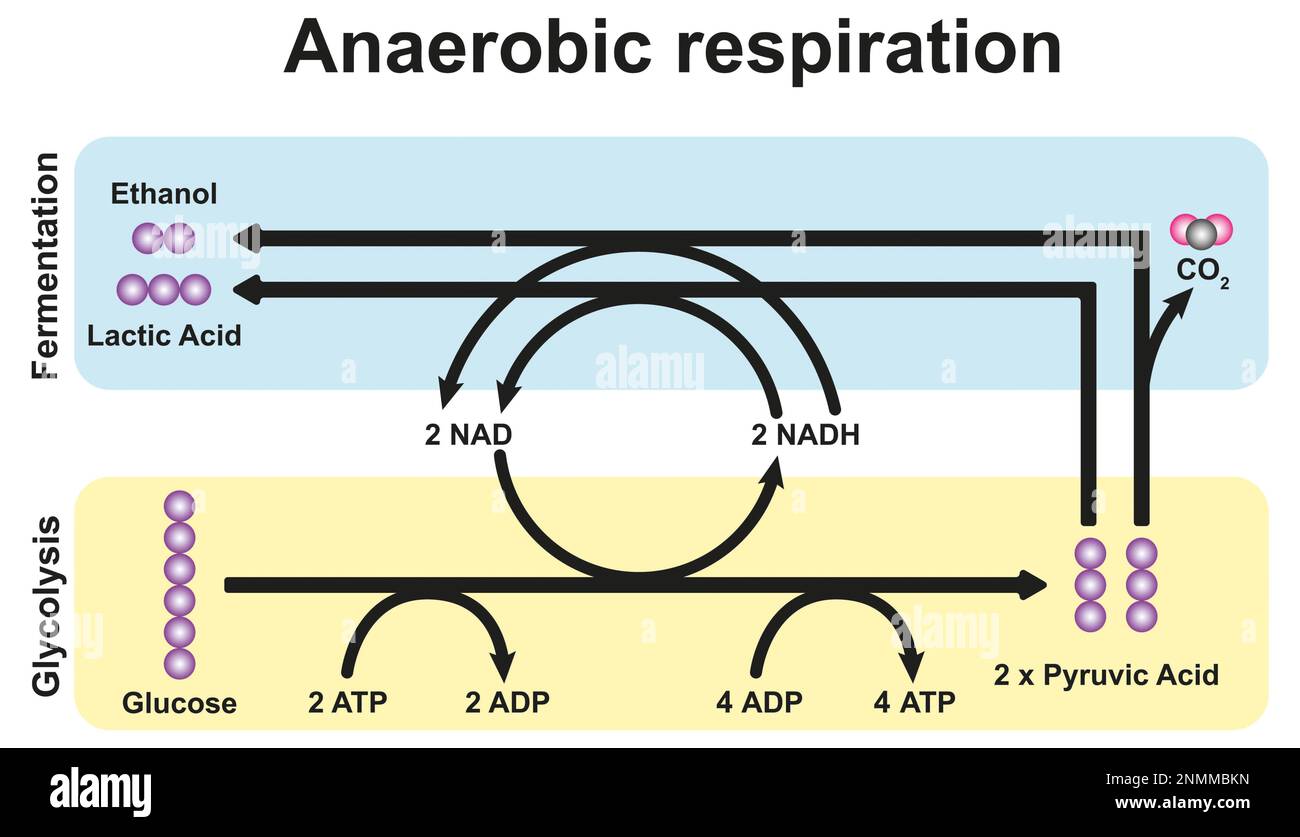 Anaerobic respiration, illustration Stock Photohttps://www.alamy.com/image-license-details/?v=1https://www.alamy.com/anaerobic-respiration-illustration-image529052377.html
Anaerobic respiration, illustration Stock Photohttps://www.alamy.com/image-license-details/?v=1https://www.alamy.com/anaerobic-respiration-illustration-image529052377.htmlRF2NMMBKN–Anaerobic respiration, illustration
 Aerobic respiration and anaerobic fermentation, illustration Stock Photohttps://www.alamy.com/image-license-details/?v=1https://www.alamy.com/aerobic-respiration-and-anaerobic-fermentation-illustration-image529052439.html
Aerobic respiration and anaerobic fermentation, illustration Stock Photohttps://www.alamy.com/image-license-details/?v=1https://www.alamy.com/aerobic-respiration-and-anaerobic-fermentation-illustration-image529052439.htmlRF2NMMBNY–Aerobic respiration and anaerobic fermentation, illustration
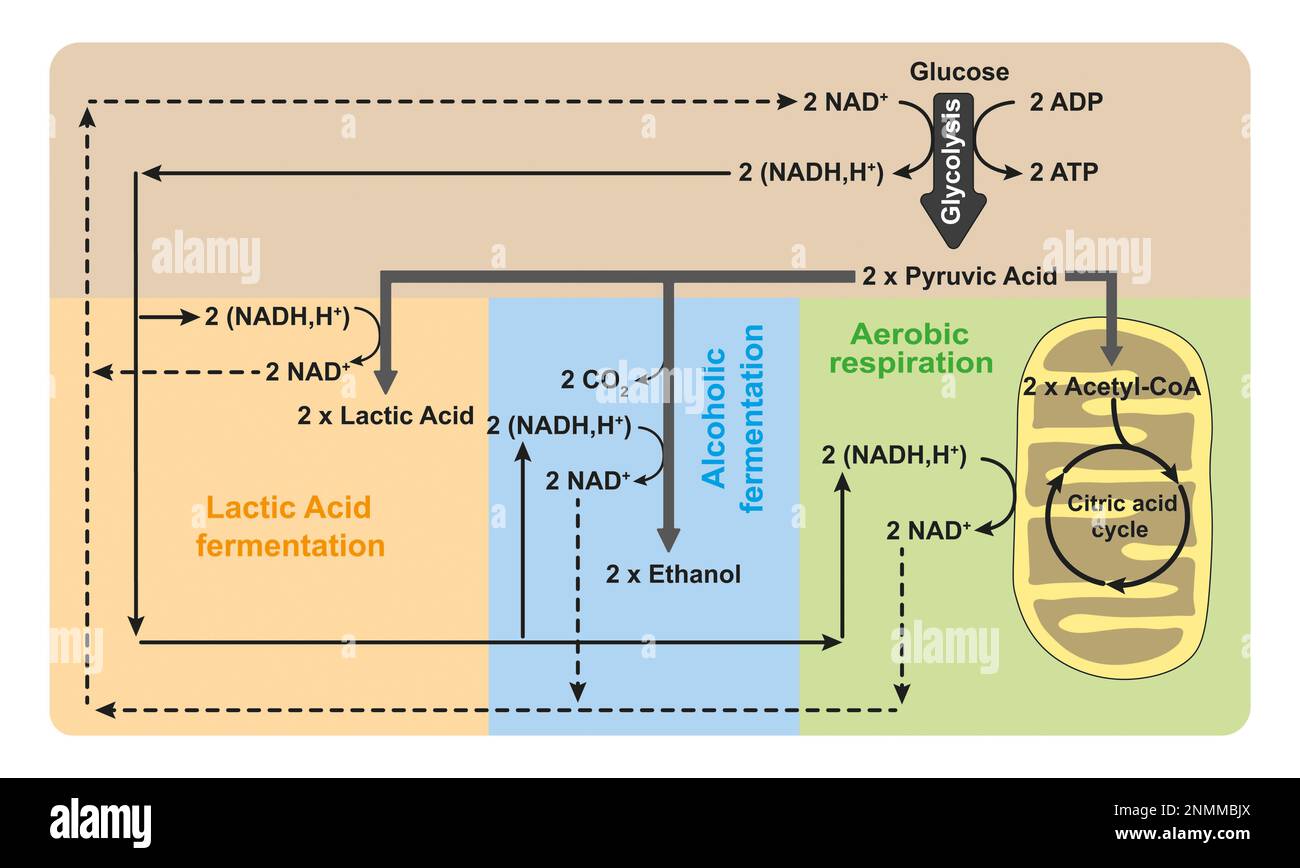 Aerobic respiration and anaerobic fermentation, illustration Stock Photohttps://www.alamy.com/image-license-details/?v=1https://www.alamy.com/aerobic-respiration-and-anaerobic-fermentation-illustration-image529052354.html
Aerobic respiration and anaerobic fermentation, illustration Stock Photohttps://www.alamy.com/image-license-details/?v=1https://www.alamy.com/aerobic-respiration-and-anaerobic-fermentation-illustration-image529052354.htmlRF2NMMBJX–Aerobic respiration and anaerobic fermentation, illustration
 Aerobic respiration, illustration Stock Photohttps://www.alamy.com/image-license-details/?v=1https://www.alamy.com/aerobic-respiration-illustration-image529052393.html
Aerobic respiration, illustration Stock Photohttps://www.alamy.com/image-license-details/?v=1https://www.alamy.com/aerobic-respiration-illustration-image529052393.htmlRF2NMMBM9–Aerobic respiration, illustration
 Structure of a centrosome, illustration. The centrosome functions as the main microtubule organising centre (MTOC) of the animal cell. It is structurally composed of two centrioles (mother centriole and daughter centriole), interconnecting fibres and pericentriolar material. Stock Photohttps://www.alamy.com/image-license-details/?v=1https://www.alamy.com/structure-of-a-centrosome-illustration-the-centrosome-functions-as-the-main-microtubule-organising-centre-mtoc-of-the-animal-cell-it-is-structurally-composed-of-two-centrioles-mother-centriole-and-daughter-centriole-interconnecting-fibres-and-pericentriolar-material-image618634039.html
Structure of a centrosome, illustration. The centrosome functions as the main microtubule organising centre (MTOC) of the animal cell. It is structurally composed of two centrioles (mother centriole and daughter centriole), interconnecting fibres and pericentriolar material. Stock Photohttps://www.alamy.com/image-license-details/?v=1https://www.alamy.com/structure-of-a-centrosome-illustration-the-centrosome-functions-as-the-main-microtubule-organising-centre-mtoc-of-the-animal-cell-it-is-structurally-composed-of-two-centrioles-mother-centriole-and-daughter-centriole-interconnecting-fibres-and-pericentriolar-material-image618634039.htmlRF2XXD60R–Structure of a centrosome, illustration. The centrosome functions as the main microtubule organising centre (MTOC) of the animal cell. It is structurally composed of two centrioles (mother centriole and daughter centriole), interconnecting fibres and pericentriolar material.
 Root hair cell, illustration Stock Photohttps://www.alamy.com/image-license-details/?v=1https://www.alamy.com/root-hair-cell-illustration-image595938767.html
Root hair cell, illustration Stock Photohttps://www.alamy.com/image-license-details/?v=1https://www.alamy.com/root-hair-cell-illustration-image595938767.htmlRF2WHF9YB–Root hair cell, illustration
 T cell activation, illustration Stock Photohttps://www.alamy.com/image-license-details/?v=1https://www.alamy.com/t-cell-activation-illustration-image534712752.html
T cell activation, illustration Stock Photohttps://www.alamy.com/image-license-details/?v=1https://www.alamy.com/t-cell-activation-illustration-image534712752.htmlRF2P1X7G0–T cell activation, illustration
 Intermediate filaments, illustration. Intermediate filaments are part of the cytoskeleton, which maintains cell shape and the motility of organelles. Stock Photohttps://www.alamy.com/image-license-details/?v=1https://www.alamy.com/intermediate-filaments-illustration-intermediate-filaments-are-part-of-the-cytoskeleton-which-maintains-cell-shape-and-the-motility-of-organelles-image618634080.html
Intermediate filaments, illustration. Intermediate filaments are part of the cytoskeleton, which maintains cell shape and the motility of organelles. Stock Photohttps://www.alamy.com/image-license-details/?v=1https://www.alamy.com/intermediate-filaments-illustration-intermediate-filaments-are-part-of-the-cytoskeleton-which-maintains-cell-shape-and-the-motility-of-organelles-image618634080.htmlRF2XXD628–Intermediate filaments, illustration. Intermediate filaments are part of the cytoskeleton, which maintains cell shape and the motility of organelles.
 Hypotonic, isotonic and hypertonic solutions, illustration. In a hypotonic solution, water moves into the cell and in a hypertonic solution water moves out of it. Stock Photohttps://www.alamy.com/image-license-details/?v=1https://www.alamy.com/hypotonic-isotonic-and-hypertonic-solutions-illustration-in-a-hypotonic-solution-water-moves-into-the-cell-and-in-a-hypertonic-solution-water-moves-out-of-it-image618634101.html
Hypotonic, isotonic and hypertonic solutions, illustration. In a hypotonic solution, water moves into the cell and in a hypertonic solution water moves out of it. Stock Photohttps://www.alamy.com/image-license-details/?v=1https://www.alamy.com/hypotonic-isotonic-and-hypertonic-solutions-illustration-in-a-hypotonic-solution-water-moves-into-the-cell-and-in-a-hypertonic-solution-water-moves-out-of-it-image618634101.htmlRF2XXD631–Hypotonic, isotonic and hypertonic solutions, illustration. In a hypotonic solution, water moves into the cell and in a hypertonic solution water moves out of it.
 Meiosis I anaphase I, illustration. During anaphase I the chromosomes move to the opposite poles of the cell. Stock Photohttps://www.alamy.com/image-license-details/?v=1https://www.alamy.com/meiosis-i-anaphase-i-illustration-during-anaphase-i-the-chromosomes-move-to-the-opposite-poles-of-the-cell-image618634140.html
Meiosis I anaphase I, illustration. During anaphase I the chromosomes move to the opposite poles of the cell. Stock Photohttps://www.alamy.com/image-license-details/?v=1https://www.alamy.com/meiosis-i-anaphase-i-illustration-during-anaphase-i-the-chromosomes-move-to-the-opposite-poles-of-the-cell-image618634140.htmlRF2XXD64C–Meiosis I anaphase I, illustration. During anaphase I the chromosomes move to the opposite poles of the cell.
 Gram negative bacterium, illustration. Gram negative bacteria are characterised by the presence of a thin peptidoglycan cell wall. Stock Photohttps://www.alamy.com/image-license-details/?v=1https://www.alamy.com/gram-negative-bacterium-illustration-gram-negative-bacteria-are-characterised-by-the-presence-of-a-thin-peptidoglycan-cell-wall-image618634132.html
Gram negative bacterium, illustration. Gram negative bacteria are characterised by the presence of a thin peptidoglycan cell wall. Stock Photohttps://www.alamy.com/image-license-details/?v=1https://www.alamy.com/gram-negative-bacterium-illustration-gram-negative-bacteria-are-characterised-by-the-presence-of-a-thin-peptidoglycan-cell-wall-image618634132.htmlRF2XXD644–Gram negative bacterium, illustration. Gram negative bacteria are characterised by the presence of a thin peptidoglycan cell wall.
 Gram negative bacterium, illustration. Gram negative bacteria are characterised by the presence of a thin peptidoglycan cell wall. Stock Photohttps://www.alamy.com/image-license-details/?v=1https://www.alamy.com/gram-negative-bacterium-illustration-gram-negative-bacteria-are-characterised-by-the-presence-of-a-thin-peptidoglycan-cell-wall-image618634118.html
Gram negative bacterium, illustration. Gram negative bacteria are characterised by the presence of a thin peptidoglycan cell wall. Stock Photohttps://www.alamy.com/image-license-details/?v=1https://www.alamy.com/gram-negative-bacterium-illustration-gram-negative-bacteria-are-characterised-by-the-presence-of-a-thin-peptidoglycan-cell-wall-image618634118.htmlRF2XXD63J–Gram negative bacterium, illustration. Gram negative bacteria are characterised by the presence of a thin peptidoglycan cell wall.
 Gram negative bacterium, illustration. Gram negative bacteria are characterised by the presence of a thin peptidoglycan cell wall. Stock Photohttps://www.alamy.com/image-license-details/?v=1https://www.alamy.com/gram-negative-bacterium-illustration-gram-negative-bacteria-are-characterised-by-the-presence-of-a-thin-peptidoglycan-cell-wall-image618634122.html
Gram negative bacterium, illustration. Gram negative bacteria are characterised by the presence of a thin peptidoglycan cell wall. Stock Photohttps://www.alamy.com/image-license-details/?v=1https://www.alamy.com/gram-negative-bacterium-illustration-gram-negative-bacteria-are-characterised-by-the-presence-of-a-thin-peptidoglycan-cell-wall-image618634122.htmlRF2XXD63P–Gram negative bacterium, illustration. Gram negative bacteria are characterised by the presence of a thin peptidoglycan cell wall.
 Immunoglobulin superfamily, illustration. The immunoglobulin superfamily (IgSF) is a large family of integral proteins that help in cell recognition and cell binding. IgSFs have immunoglobin domains and fibronectin type domain. Stock Photohttps://www.alamy.com/image-license-details/?v=1https://www.alamy.com/immunoglobulin-superfamily-illustration-the-immunoglobulin-superfamily-igsf-is-a-large-family-of-integral-proteins-that-help-in-cell-recognition-and-cell-binding-igsfs-have-immunoglobin-domains-and-fibronectin-type-domain-image618634139.html
Immunoglobulin superfamily, illustration. The immunoglobulin superfamily (IgSF) is a large family of integral proteins that help in cell recognition and cell binding. IgSFs have immunoglobin domains and fibronectin type domain. Stock Photohttps://www.alamy.com/image-license-details/?v=1https://www.alamy.com/immunoglobulin-superfamily-illustration-the-immunoglobulin-superfamily-igsf-is-a-large-family-of-integral-proteins-that-help-in-cell-recognition-and-cell-binding-igsfs-have-immunoglobin-domains-and-fibronectin-type-domain-image618634139.htmlRF2XXD64B–Immunoglobulin superfamily, illustration. The immunoglobulin superfamily (IgSF) is a large family of integral proteins that help in cell recognition and cell binding. IgSFs have immunoglobin domains and fibronectin type domain.
 PXo bodies, illustration. PXo bodies are a newly discovered cell organelle. Stock Photohttps://www.alamy.com/image-license-details/?v=1https://www.alamy.com/pxo-bodies-illustration-pxo-bodies-are-a-newly-discovered-cell-organelle-image618634293.html
PXo bodies, illustration. PXo bodies are a newly discovered cell organelle. Stock Photohttps://www.alamy.com/image-license-details/?v=1https://www.alamy.com/pxo-bodies-illustration-pxo-bodies-are-a-newly-discovered-cell-organelle-image618634293.htmlRF2XXD69W–PXo bodies, illustration. PXo bodies are a newly discovered cell organelle.
 Prophase, illustration. Prophase is the first phase of mitosis, the process that separates the duplicated genetic material carried in the nucleus of a parent cell into two identical daughter cells. Stock Photohttps://www.alamy.com/image-license-details/?v=1https://www.alamy.com/prophase-illustration-prophase-is-the-first-phase-of-mitosis-the-process-that-separates-the-duplicated-genetic-material-carried-in-the-nucleus-of-a-parent-cell-into-two-identical-daughter-cells-image618634287.html
Prophase, illustration. Prophase is the first phase of mitosis, the process that separates the duplicated genetic material carried in the nucleus of a parent cell into two identical daughter cells. Stock Photohttps://www.alamy.com/image-license-details/?v=1https://www.alamy.com/prophase-illustration-prophase-is-the-first-phase-of-mitosis-the-process-that-separates-the-duplicated-genetic-material-carried-in-the-nucleus-of-a-parent-cell-into-two-identical-daughter-cells-image618634287.htmlRF2XXD69K–Prophase, illustration. Prophase is the first phase of mitosis, the process that separates the duplicated genetic material carried in the nucleus of a parent cell into two identical daughter cells.
 Meiosis II telophase II, illustration. Each daughter cell is haploid (has half the total number of chromosomes of the original cell). Stock Photohttps://www.alamy.com/image-license-details/?v=1https://www.alamy.com/meiosis-ii-telophase-ii-illustration-each-daughter-cell-is-haploid-has-half-the-total-number-of-chromosomes-of-the-original-cell-image618634143.html
Meiosis II telophase II, illustration. Each daughter cell is haploid (has half the total number of chromosomes of the original cell). Stock Photohttps://www.alamy.com/image-license-details/?v=1https://www.alamy.com/meiosis-ii-telophase-ii-illustration-each-daughter-cell-is-haploid-has-half-the-total-number-of-chromosomes-of-the-original-cell-image618634143.htmlRF2XXD64F–Meiosis II telophase II, illustration. Each daughter cell is haploid (has half the total number of chromosomes of the original cell).
 Protoplast, illustration. The protoplast is formed by degradation of the cell wall in a Gram positive bacteria. Stock Photohttps://www.alamy.com/image-license-details/?v=1https://www.alamy.com/protoplast-illustration-the-protoplast-is-formed-by-degradation-of-the-cell-wall-in-a-gram-positive-bacteria-image618634299.html
Protoplast, illustration. The protoplast is formed by degradation of the cell wall in a Gram positive bacteria. Stock Photohttps://www.alamy.com/image-license-details/?v=1https://www.alamy.com/protoplast-illustration-the-protoplast-is-formed-by-degradation-of-the-cell-wall-in-a-gram-positive-bacteria-image618634299.htmlRF2XXD6A3–Protoplast, illustration. The protoplast is formed by degradation of the cell wall in a Gram positive bacteria.
 Gram positive bacterium, illustration. Gram positive bacteria are characterised by the presence of a multilayered peptidoglycan cell wall that appears purple after Gram Staining. Stock Photohttps://www.alamy.com/image-license-details/?v=1https://www.alamy.com/gram-positive-bacterium-illustration-gram-positive-bacteria-are-characterised-by-the-presence-of-a-multilayered-peptidoglycan-cell-wall-that-appears-purple-after-gram-staining-image618634134.html
Gram positive bacterium, illustration. Gram positive bacteria are characterised by the presence of a multilayered peptidoglycan cell wall that appears purple after Gram Staining. Stock Photohttps://www.alamy.com/image-license-details/?v=1https://www.alamy.com/gram-positive-bacterium-illustration-gram-positive-bacteria-are-characterised-by-the-presence-of-a-multilayered-peptidoglycan-cell-wall-that-appears-purple-after-gram-staining-image618634134.htmlRF2XXD646–Gram positive bacterium, illustration. Gram positive bacteria are characterised by the presence of a multilayered peptidoglycan cell wall that appears purple after Gram Staining.
 Gram positive bacterium, illustration. Gram positive bacteria are characterised by the presence of a multilayered peptidoglycan cell wall that appears purple after Gram Staining. Stock Photohttps://www.alamy.com/image-license-details/?v=1https://www.alamy.com/gram-positive-bacterium-illustration-gram-positive-bacteria-are-characterised-by-the-presence-of-a-multilayered-peptidoglycan-cell-wall-that-appears-purple-after-gram-staining-image618634129.html
Gram positive bacterium, illustration. Gram positive bacteria are characterised by the presence of a multilayered peptidoglycan cell wall that appears purple after Gram Staining. Stock Photohttps://www.alamy.com/image-license-details/?v=1https://www.alamy.com/gram-positive-bacterium-illustration-gram-positive-bacteria-are-characterised-by-the-presence-of-a-multilayered-peptidoglycan-cell-wall-that-appears-purple-after-gram-staining-image618634129.htmlRF2XXD641–Gram positive bacterium, illustration. Gram positive bacteria are characterised by the presence of a multilayered peptidoglycan cell wall that appears purple after Gram Staining.
 Gram positive bacterium, illustration. Gram positive bacteria are characterised by the presence of a multilayered peptidoglycan cell wall that appears purple after Gram Staining. Stock Photohttps://www.alamy.com/image-license-details/?v=1https://www.alamy.com/gram-positive-bacterium-illustration-gram-positive-bacteria-are-characterised-by-the-presence-of-a-multilayered-peptidoglycan-cell-wall-that-appears-purple-after-gram-staining-image618634078.html
Gram positive bacterium, illustration. Gram positive bacteria are characterised by the presence of a multilayered peptidoglycan cell wall that appears purple after Gram Staining. Stock Photohttps://www.alamy.com/image-license-details/?v=1https://www.alamy.com/gram-positive-bacterium-illustration-gram-positive-bacteria-are-characterised-by-the-presence-of-a-multilayered-peptidoglycan-cell-wall-that-appears-purple-after-gram-staining-image618634078.htmlRF2XXD626–Gram positive bacterium, illustration. Gram positive bacteria are characterised by the presence of a multilayered peptidoglycan cell wall that appears purple after Gram Staining.
 Metaphase, illustration. Metaphase is the third phase of mitosis, the process that separates duplicated genetic material carried in the nucleus of a parent cell into two identical daughter cells. Stock Photohttps://www.alamy.com/image-license-details/?v=1https://www.alamy.com/metaphase-illustration-metaphase-is-the-third-phase-of-mitosis-the-process-that-separates-duplicated-genetic-material-carried-in-the-nucleus-of-a-parent-cell-into-two-identical-daughter-cells-image618634131.html
Metaphase, illustration. Metaphase is the third phase of mitosis, the process that separates duplicated genetic material carried in the nucleus of a parent cell into two identical daughter cells. Stock Photohttps://www.alamy.com/image-license-details/?v=1https://www.alamy.com/metaphase-illustration-metaphase-is-the-third-phase-of-mitosis-the-process-that-separates-duplicated-genetic-material-carried-in-the-nucleus-of-a-parent-cell-into-two-identical-daughter-cells-image618634131.htmlRF2XXD643–Metaphase, illustration. Metaphase is the third phase of mitosis, the process that separates duplicated genetic material carried in the nucleus of a parent cell into two identical daughter cells.
 Integrins, illustration. Integrins are type of cell adhesion molecule (CAM). The are integral membrane proteins, made up of two polypeptide chains; alpha and beta. Integrin becomes active when these two units dimerise. Stock Photohttps://www.alamy.com/image-license-details/?v=1https://www.alamy.com/integrins-illustration-integrins-are-type-of-cell-adhesion-molecule-cam-the-are-integral-membrane-proteins-made-up-of-two-polypeptide-chains-alpha-and-beta-integrin-becomes-active-when-these-two-units-dimerise-image618634038.html
Integrins, illustration. Integrins are type of cell adhesion molecule (CAM). The are integral membrane proteins, made up of two polypeptide chains; alpha and beta. Integrin becomes active when these two units dimerise. Stock Photohttps://www.alamy.com/image-license-details/?v=1https://www.alamy.com/integrins-illustration-integrins-are-type-of-cell-adhesion-molecule-cam-the-are-integral-membrane-proteins-made-up-of-two-polypeptide-chains-alpha-and-beta-integrin-becomes-active-when-these-two-units-dimerise-image618634038.htmlRF2XXD60P–Integrins, illustration. Integrins are type of cell adhesion molecule (CAM). The are integral membrane proteins, made up of two polypeptide chains; alpha and beta. Integrin becomes active when these two units dimerise.
 Metaphase of mitosis, illustration. Metaphase is the third phase of mitosis, the process that separates duplicated genetic material carried in the nucleus of a parent cell into two identical daughter cells. Stock Photohttps://www.alamy.com/image-license-details/?v=1https://www.alamy.com/metaphase-of-mitosis-illustration-metaphase-is-the-third-phase-of-mitosis-the-process-that-separates-duplicated-genetic-material-carried-in-the-nucleus-of-a-parent-cell-into-two-identical-daughter-cells-image618634109.html
Metaphase of mitosis, illustration. Metaphase is the third phase of mitosis, the process that separates duplicated genetic material carried in the nucleus of a parent cell into two identical daughter cells. Stock Photohttps://www.alamy.com/image-license-details/?v=1https://www.alamy.com/metaphase-of-mitosis-illustration-metaphase-is-the-third-phase-of-mitosis-the-process-that-separates-duplicated-genetic-material-carried-in-the-nucleus-of-a-parent-cell-into-two-identical-daughter-cells-image618634109.htmlRF2XXD639–Metaphase of mitosis, illustration. Metaphase is the third phase of mitosis, the process that separates duplicated genetic material carried in the nucleus of a parent cell into two identical daughter cells.
 Meiosis II prophase II, illustration. During prophase II the chromosomes condense and a new set of spindle fibres form. The chromosomes begin moving towards the equator of the cell. Stock Photohttps://www.alamy.com/image-license-details/?v=1https://www.alamy.com/meiosis-ii-prophase-ii-illustration-during-prophase-ii-the-chromosomes-condense-and-a-new-set-of-spindle-fibres-form-the-chromosomes-begin-moving-towards-the-equator-of-the-cell-image618634126.html
Meiosis II prophase II, illustration. During prophase II the chromosomes condense and a new set of spindle fibres form. The chromosomes begin moving towards the equator of the cell. Stock Photohttps://www.alamy.com/image-license-details/?v=1https://www.alamy.com/meiosis-ii-prophase-ii-illustration-during-prophase-ii-the-chromosomes-condense-and-a-new-set-of-spindle-fibres-form-the-chromosomes-begin-moving-towards-the-equator-of-the-cell-image618634126.htmlRF2XXD63X–Meiosis II prophase II, illustration. During prophase II the chromosomes condense and a new set of spindle fibres form. The chromosomes begin moving towards the equator of the cell.
 Caveolae, illustration. Caveolae or 'little caves' are small invaginations of the cell plasma membrane. They function during endocytosis, signal transduction and lipid and cholesterol regulation. Stock Photohttps://www.alamy.com/image-license-details/?v=1https://www.alamy.com/caveolae-illustration-caveolae-or-little-caves-are-small-invaginations-of-the-cell-plasma-membrane-they-function-during-endocytosis-signal-transduction-and-lipid-and-cholesterol-regulation-image618634057.html
Caveolae, illustration. Caveolae or 'little caves' are small invaginations of the cell plasma membrane. They function during endocytosis, signal transduction and lipid and cholesterol regulation. Stock Photohttps://www.alamy.com/image-license-details/?v=1https://www.alamy.com/caveolae-illustration-caveolae-or-little-caves-are-small-invaginations-of-the-cell-plasma-membrane-they-function-during-endocytosis-signal-transduction-and-lipid-and-cholesterol-regulation-image618634057.htmlRF2XXD61D–Caveolae, illustration. Caveolae or 'little caves' are small invaginations of the cell plasma membrane. They function during endocytosis, signal transduction and lipid and cholesterol regulation.
 Meiosis, illustration. Meiosis is the process by which a single cell divides twice to form four haploid daughter cells. Stock Photohttps://www.alamy.com/image-license-details/?v=1https://www.alamy.com/meiosis-illustration-meiosis-is-the-process-by-which-a-single-cell-divides-twice-to-form-four-haploid-daughter-cells-image618634054.html
Meiosis, illustration. Meiosis is the process by which a single cell divides twice to form four haploid daughter cells. Stock Photohttps://www.alamy.com/image-license-details/?v=1https://www.alamy.com/meiosis-illustration-meiosis-is-the-process-by-which-a-single-cell-divides-twice-to-form-four-haploid-daughter-cells-image618634054.htmlRF2XXD61A–Meiosis, illustration. Meiosis is the process by which a single cell divides twice to form four haploid daughter cells.
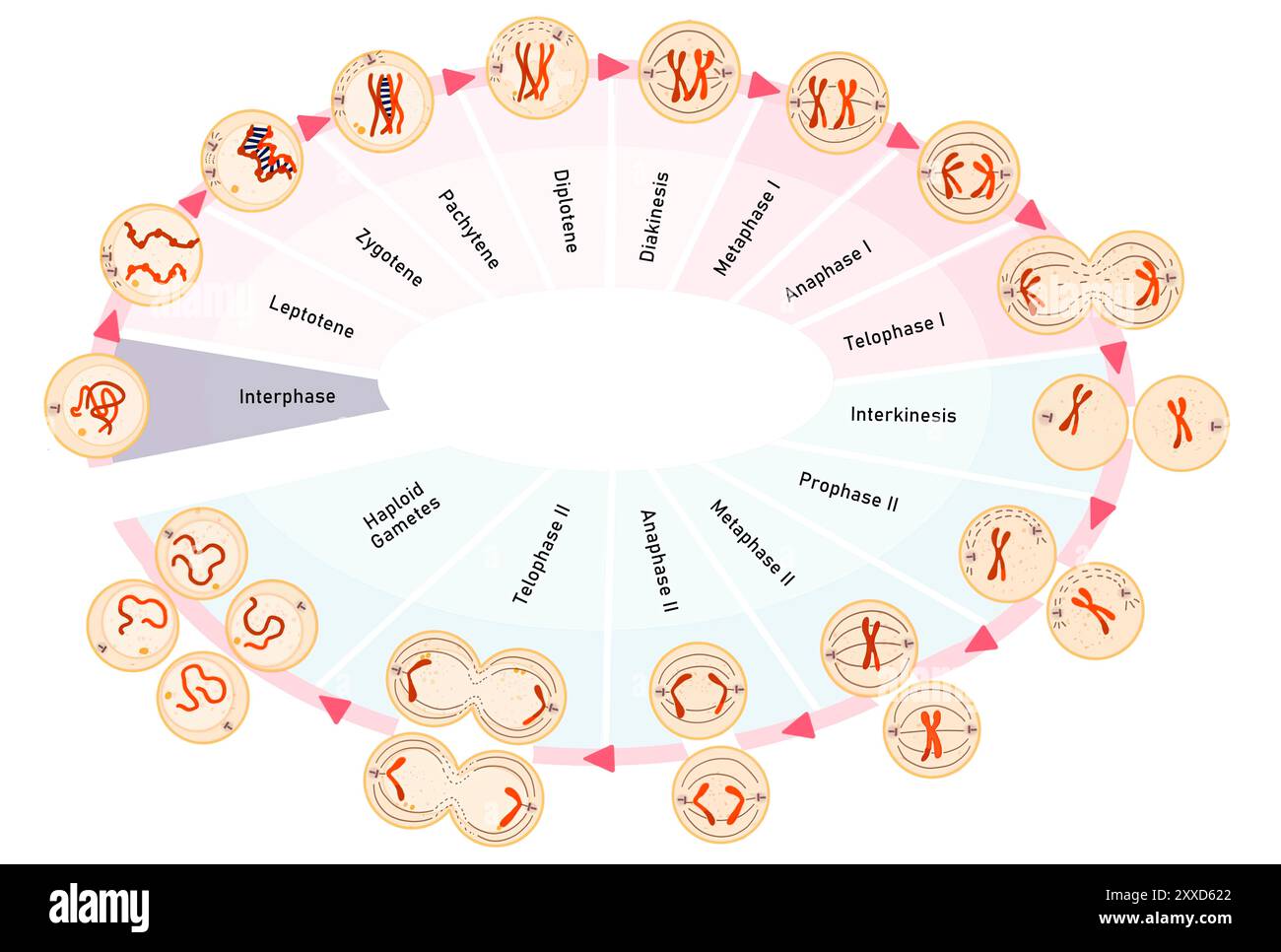 Meiosis, illustration. Meiosis is the process by which a single cell divides twice to form four haploid daughter cells. Stock Photohttps://www.alamy.com/image-license-details/?v=1https://www.alamy.com/meiosis-illustration-meiosis-is-the-process-by-which-a-single-cell-divides-twice-to-form-four-haploid-daughter-cells-image618634074.html
Meiosis, illustration. Meiosis is the process by which a single cell divides twice to form four haploid daughter cells. Stock Photohttps://www.alamy.com/image-license-details/?v=1https://www.alamy.com/meiosis-illustration-meiosis-is-the-process-by-which-a-single-cell-divides-twice-to-form-four-haploid-daughter-cells-image618634074.htmlRF2XXD622–Meiosis, illustration. Meiosis is the process by which a single cell divides twice to form four haploid daughter cells.
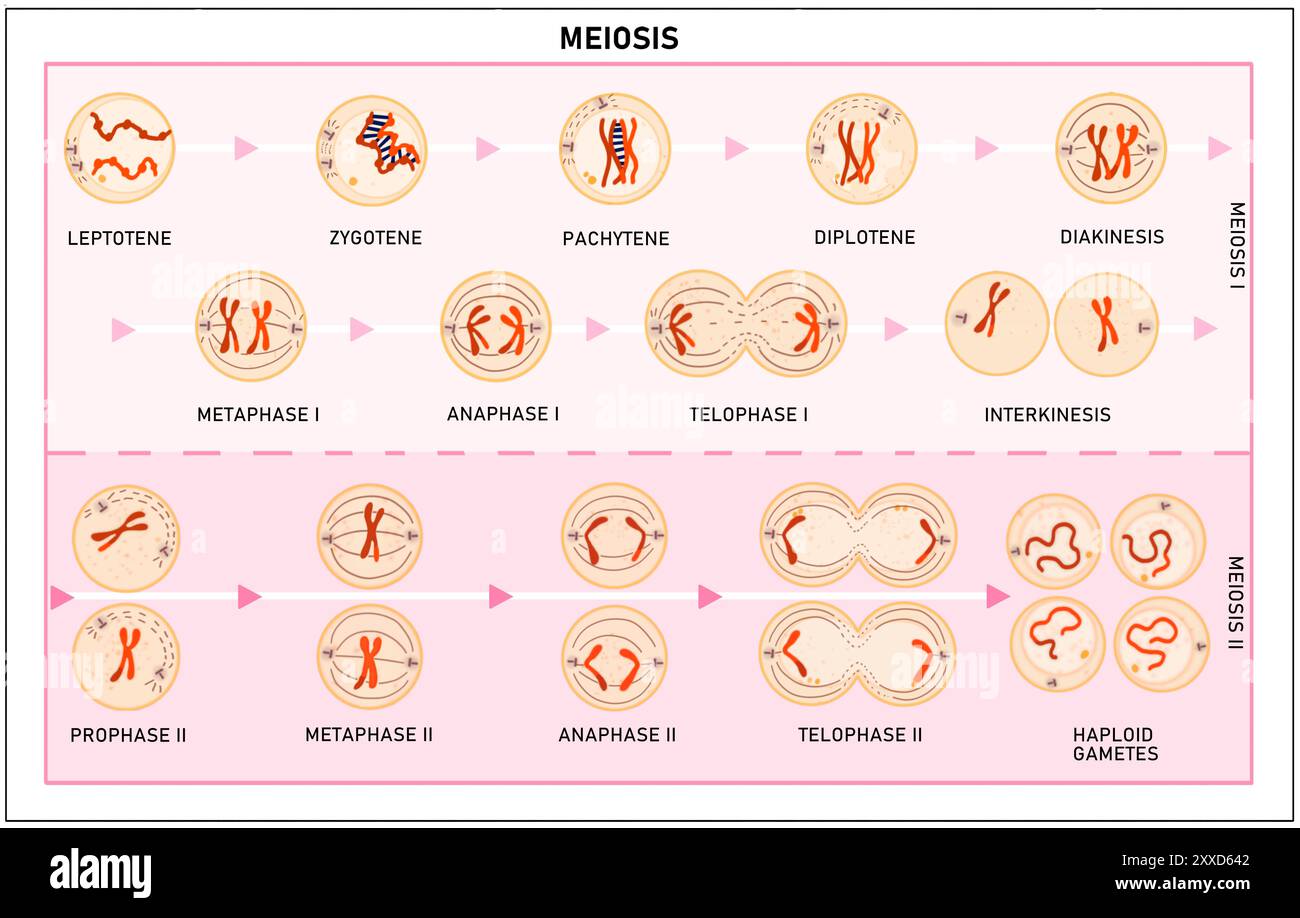 Meiosis, illustration. Meiosis is the process by which a single cell divides twice to form four haploid daughter cells. Stock Photohttps://www.alamy.com/image-license-details/?v=1https://www.alamy.com/meiosis-illustration-meiosis-is-the-process-by-which-a-single-cell-divides-twice-to-form-four-haploid-daughter-cells-image618634130.html
Meiosis, illustration. Meiosis is the process by which a single cell divides twice to form four haploid daughter cells. Stock Photohttps://www.alamy.com/image-license-details/?v=1https://www.alamy.com/meiosis-illustration-meiosis-is-the-process-by-which-a-single-cell-divides-twice-to-form-four-haploid-daughter-cells-image618634130.htmlRF2XXD642–Meiosis, illustration. Meiosis is the process by which a single cell divides twice to form four haploid daughter cells.
 Meiosis, illustration. Meiosis is the process by which a single cell divides twice to form four haploid daughter cells. Stock Photohttps://www.alamy.com/image-license-details/?v=1https://www.alamy.com/meiosis-illustration-meiosis-is-the-process-by-which-a-single-cell-divides-twice-to-form-four-haploid-daughter-cells-image618634146.html
Meiosis, illustration. Meiosis is the process by which a single cell divides twice to form four haploid daughter cells. Stock Photohttps://www.alamy.com/image-license-details/?v=1https://www.alamy.com/meiosis-illustration-meiosis-is-the-process-by-which-a-single-cell-divides-twice-to-form-four-haploid-daughter-cells-image618634146.htmlRF2XXD64J–Meiosis, illustration. Meiosis is the process by which a single cell divides twice to form four haploid daughter cells.
 Meiosis, illustration. Meiosis is the process by which a single cell divides twice to form four haploid daughter cells. Stock Photohttps://www.alamy.com/image-license-details/?v=1https://www.alamy.com/meiosis-illustration-meiosis-is-the-process-by-which-a-single-cell-divides-twice-to-form-four-haploid-daughter-cells-image618634121.html
Meiosis, illustration. Meiosis is the process by which a single cell divides twice to form four haploid daughter cells. Stock Photohttps://www.alamy.com/image-license-details/?v=1https://www.alamy.com/meiosis-illustration-meiosis-is-the-process-by-which-a-single-cell-divides-twice-to-form-four-haploid-daughter-cells-image618634121.htmlRF2XXD63N–Meiosis, illustration. Meiosis is the process by which a single cell divides twice to form four haploid daughter cells.
 Meiosis, illustration. Meiosis is the process by which a single cell divides twice to form four haploid daughter cells. Stock Photohttps://www.alamy.com/image-license-details/?v=1https://www.alamy.com/meiosis-illustration-meiosis-is-the-process-by-which-a-single-cell-divides-twice-to-form-four-haploid-daughter-cells-image618634089.html
Meiosis, illustration. Meiosis is the process by which a single cell divides twice to form four haploid daughter cells. Stock Photohttps://www.alamy.com/image-license-details/?v=1https://www.alamy.com/meiosis-illustration-meiosis-is-the-process-by-which-a-single-cell-divides-twice-to-form-four-haploid-daughter-cells-image618634089.htmlRF2XXD62H–Meiosis, illustration. Meiosis is the process by which a single cell divides twice to form four haploid daughter cells.
 Meiosis, illustration. Meiosis is the process by which a single cell divides twice to form four haploid daughter cells. Stock Photohttps://www.alamy.com/image-license-details/?v=1https://www.alamy.com/meiosis-illustration-meiosis-is-the-process-by-which-a-single-cell-divides-twice-to-form-four-haploid-daughter-cells-image618634036.html
Meiosis, illustration. Meiosis is the process by which a single cell divides twice to form four haploid daughter cells. Stock Photohttps://www.alamy.com/image-license-details/?v=1https://www.alamy.com/meiosis-illustration-meiosis-is-the-process-by-which-a-single-cell-divides-twice-to-form-four-haploid-daughter-cells-image618634036.htmlRF2XXD60M–Meiosis, illustration. Meiosis is the process by which a single cell divides twice to form four haploid daughter cells.
 Meiosis I telophase I, illustration. During telophase , the chromosomes are enclosed in the nucleus. The cell then undergoes cytokinesis, which divides the cytoplasm of the original cell into two daughter cells. Stock Photohttps://www.alamy.com/image-license-details/?v=1https://www.alamy.com/meiosis-i-telophase-i-illustration-during-telophase-the-chromosomes-are-enclosed-in-the-nucleus-the-cell-then-undergoes-cytokinesis-which-divides-the-cytoplasm-of-the-original-cell-into-two-daughter-cells-image618634119.html
Meiosis I telophase I, illustration. During telophase , the chromosomes are enclosed in the nucleus. The cell then undergoes cytokinesis, which divides the cytoplasm of the original cell into two daughter cells. Stock Photohttps://www.alamy.com/image-license-details/?v=1https://www.alamy.com/meiosis-i-telophase-i-illustration-during-telophase-the-chromosomes-are-enclosed-in-the-nucleus-the-cell-then-undergoes-cytokinesis-which-divides-the-cytoplasm-of-the-original-cell-into-two-daughter-cells-image618634119.htmlRF2XXD63K–Meiosis I telophase I, illustration. During telophase , the chromosomes are enclosed in the nucleus. The cell then undergoes cytokinesis, which divides the cytoplasm of the original cell into two daughter cells.
 Structure of peptidoglycan, illustration. Peptidoglycan is a component of bacterial cell walls. Structurally it is a heteropolysaccharide where carbohydrates (N-acetylglucosamine and N-acetylmuramic acid)are conjugated with amino acids. Stock Photohttps://www.alamy.com/image-license-details/?v=1https://www.alamy.com/structure-of-peptidoglycan-illustration-peptidoglycan-is-a-component-of-bacterial-cell-walls-structurally-it-is-a-heteropolysaccharide-where-carbohydrates-n-acetylglucosamine-and-n-acetylmuramic-acidare-conjugated-with-amino-acids-image618634303.html
Structure of peptidoglycan, illustration. Peptidoglycan is a component of bacterial cell walls. Structurally it is a heteropolysaccharide where carbohydrates (N-acetylglucosamine and N-acetylmuramic acid)are conjugated with amino acids. Stock Photohttps://www.alamy.com/image-license-details/?v=1https://www.alamy.com/structure-of-peptidoglycan-illustration-peptidoglycan-is-a-component-of-bacterial-cell-walls-structurally-it-is-a-heteropolysaccharide-where-carbohydrates-n-acetylglucosamine-and-n-acetylmuramic-acidare-conjugated-with-amino-acids-image618634303.htmlRF2XXD6A7–Structure of peptidoglycan, illustration. Peptidoglycan is a component of bacterial cell walls. Structurally it is a heteropolysaccharide where carbohydrates (N-acetylglucosamine and N-acetylmuramic acid)are conjugated with amino acids.
 Sphaeroplast, illustration. A sphaeroplast is a Gram negative bacterium whose cell wall has been degraded by enzymes leaving the cell intact with a cell membrane and lipopolysaccharide layer. Stock Photohttps://www.alamy.com/image-license-details/?v=1https://www.alamy.com/sphaeroplast-illustration-a-sphaeroplast-is-a-gram-negative-bacterium-whose-cell-wall-has-been-degraded-by-enzymes-leaving-the-cell-intact-with-a-cell-membrane-and-lipopolysaccharide-layer-image618634289.html
Sphaeroplast, illustration. A sphaeroplast is a Gram negative bacterium whose cell wall has been degraded by enzymes leaving the cell intact with a cell membrane and lipopolysaccharide layer. Stock Photohttps://www.alamy.com/image-license-details/?v=1https://www.alamy.com/sphaeroplast-illustration-a-sphaeroplast-is-a-gram-negative-bacterium-whose-cell-wall-has-been-degraded-by-enzymes-leaving-the-cell-intact-with-a-cell-membrane-and-lipopolysaccharide-layer-image618634289.htmlRF2XXD69N–Sphaeroplast, illustration. A sphaeroplast is a Gram negative bacterium whose cell wall has been degraded by enzymes leaving the cell intact with a cell membrane and lipopolysaccharide layer.
 Mitosis, illustration. Mitosis is the process by which a cell replicates its chromosomes and then segregates them, producing two identical nuclei in preparation for cell division. Stock Photohttps://www.alamy.com/image-license-details/?v=1https://www.alamy.com/mitosis-illustration-mitosis-is-the-process-by-which-a-cell-replicates-its-chromosomes-and-then-segregates-them-producing-two-identical-nuclei-in-preparation-for-cell-division-image618634142.html
Mitosis, illustration. Mitosis is the process by which a cell replicates its chromosomes and then segregates them, producing two identical nuclei in preparation for cell division. Stock Photohttps://www.alamy.com/image-license-details/?v=1https://www.alamy.com/mitosis-illustration-mitosis-is-the-process-by-which-a-cell-replicates-its-chromosomes-and-then-segregates-them-producing-two-identical-nuclei-in-preparation-for-cell-division-image618634142.htmlRF2XXD64E–Mitosis, illustration. Mitosis is the process by which a cell replicates its chromosomes and then segregates them, producing two identical nuclei in preparation for cell division.
 Mitosis, illustration. Mitosis is the process by which a cell replicates its chromosomes and then segregates them, producing two identical nuclei in preparation for cell division. Stock Photohttps://www.alamy.com/image-license-details/?v=1https://www.alamy.com/mitosis-illustration-mitosis-is-the-process-by-which-a-cell-replicates-its-chromosomes-and-then-segregates-them-producing-two-identical-nuclei-in-preparation-for-cell-division-image618634263.html
Mitosis, illustration. Mitosis is the process by which a cell replicates its chromosomes and then segregates them, producing two identical nuclei in preparation for cell division. Stock Photohttps://www.alamy.com/image-license-details/?v=1https://www.alamy.com/mitosis-illustration-mitosis-is-the-process-by-which-a-cell-replicates-its-chromosomes-and-then-segregates-them-producing-two-identical-nuclei-in-preparation-for-cell-division-image618634263.htmlRF2XXD68R–Mitosis, illustration. Mitosis is the process by which a cell replicates its chromosomes and then segregates them, producing two identical nuclei in preparation for cell division.
 Mitosis, illustration. Mitosis is the process by which a cell replicates its chromosomes and then segregates them, producing two identical nuclei in preparation for cell division. Stock Photohttps://www.alamy.com/image-license-details/?v=1https://www.alamy.com/mitosis-illustration-mitosis-is-the-process-by-which-a-cell-replicates-its-chromosomes-and-then-segregates-them-producing-two-identical-nuclei-in-preparation-for-cell-division-image618634091.html
Mitosis, illustration. Mitosis is the process by which a cell replicates its chromosomes and then segregates them, producing two identical nuclei in preparation for cell division. Stock Photohttps://www.alamy.com/image-license-details/?v=1https://www.alamy.com/mitosis-illustration-mitosis-is-the-process-by-which-a-cell-replicates-its-chromosomes-and-then-segregates-them-producing-two-identical-nuclei-in-preparation-for-cell-division-image618634091.htmlRF2XXD62K–Mitosis, illustration. Mitosis is the process by which a cell replicates its chromosomes and then segregates them, producing two identical nuclei in preparation for cell division.
 Mitosis, illustration. Mitosis is the process by which a cell replicates its chromosomes and then segregates them, producing two identical nuclei in preparation for cell division. Stock Photohttps://www.alamy.com/image-license-details/?v=1https://www.alamy.com/mitosis-illustration-mitosis-is-the-process-by-which-a-cell-replicates-its-chromosomes-and-then-segregates-them-producing-two-identical-nuclei-in-preparation-for-cell-division-image618634127.html
Mitosis, illustration. Mitosis is the process by which a cell replicates its chromosomes and then segregates them, producing two identical nuclei in preparation for cell division. Stock Photohttps://www.alamy.com/image-license-details/?v=1https://www.alamy.com/mitosis-illustration-mitosis-is-the-process-by-which-a-cell-replicates-its-chromosomes-and-then-segregates-them-producing-two-identical-nuclei-in-preparation-for-cell-division-image618634127.htmlRF2XXD63Y–Mitosis, illustration. Mitosis is the process by which a cell replicates its chromosomes and then segregates them, producing two identical nuclei in preparation for cell division.
 Mitosis, illustration. Mitosis is the process by which a cell replicates its chromosomes and then segregates them, producing two identical nuclei in preparation for cell division. Stock Photohttps://www.alamy.com/image-license-details/?v=1https://www.alamy.com/mitosis-illustration-mitosis-is-the-process-by-which-a-cell-replicates-its-chromosomes-and-then-segregates-them-producing-two-identical-nuclei-in-preparation-for-cell-division-image618634081.html
Mitosis, illustration. Mitosis is the process by which a cell replicates its chromosomes and then segregates them, producing two identical nuclei in preparation for cell division. Stock Photohttps://www.alamy.com/image-license-details/?v=1https://www.alamy.com/mitosis-illustration-mitosis-is-the-process-by-which-a-cell-replicates-its-chromosomes-and-then-segregates-them-producing-two-identical-nuclei-in-preparation-for-cell-division-image618634081.htmlRF2XXD629–Mitosis, illustration. Mitosis is the process by which a cell replicates its chromosomes and then segregates them, producing two identical nuclei in preparation for cell division.
 Mitosis, illustration. Mitosis is the process by which a cell replicates its chromosomes and then segregates them, producing two identical nuclei in preparation for cell division. Stock Photohttps://www.alamy.com/image-license-details/?v=1https://www.alamy.com/mitosis-illustration-mitosis-is-the-process-by-which-a-cell-replicates-its-chromosomes-and-then-segregates-them-producing-two-identical-nuclei-in-preparation-for-cell-division-image618634071.html
Mitosis, illustration. Mitosis is the process by which a cell replicates its chromosomes and then segregates them, producing two identical nuclei in preparation for cell division. Stock Photohttps://www.alamy.com/image-license-details/?v=1https://www.alamy.com/mitosis-illustration-mitosis-is-the-process-by-which-a-cell-replicates-its-chromosomes-and-then-segregates-them-producing-two-identical-nuclei-in-preparation-for-cell-division-image618634071.htmlRF2XXD61Y–Mitosis, illustration. Mitosis is the process by which a cell replicates its chromosomes and then segregates them, producing two identical nuclei in preparation for cell division.
 Structure of a centriole, illustration. A centriole is a cylindrical organelle that is a component of the centrosome (microtubule organizing centres). Centrioles are composed of protein tubulin and play an important role in organising microtubules during cell division. Stock Photohttps://www.alamy.com/image-license-details/?v=1https://www.alamy.com/structure-of-a-centriole-illustration-a-centriole-is-a-cylindrical-organelle-that-is-a-component-of-the-centrosome-microtubule-organizing-centres-centrioles-are-composed-of-protein-tubulin-and-play-an-important-role-in-organising-microtubules-during-cell-division-image618634111.html
Structure of a centriole, illustration. A centriole is a cylindrical organelle that is a component of the centrosome (microtubule organizing centres). Centrioles are composed of protein tubulin and play an important role in organising microtubules during cell division. Stock Photohttps://www.alamy.com/image-license-details/?v=1https://www.alamy.com/structure-of-a-centriole-illustration-a-centriole-is-a-cylindrical-organelle-that-is-a-component-of-the-centrosome-microtubule-organizing-centres-centrioles-are-composed-of-protein-tubulin-and-play-an-important-role-in-organising-microtubules-during-cell-division-image618634111.htmlRF2XXD63B–Structure of a centriole, illustration. A centriole is a cylindrical organelle that is a component of the centrosome (microtubule organizing centres). Centrioles are composed of protein tubulin and play an important role in organising microtubules during cell division.
 Structure of a bacterial flagellum, illustration. Different flagellin proteins are arranged in a helical manner. The filament is embedded in the cell via a basal body. Flagella help in locomotion and can also have sensory functions. Stock Photohttps://www.alamy.com/image-license-details/?v=1https://www.alamy.com/structure-of-a-bacterial-flagellum-illustration-different-flagellin-proteins-are-arranged-in-a-helical-manner-the-filament-is-embedded-in-the-cell-via-a-basal-body-flagella-help-in-locomotion-and-can-also-have-sensory-functions-image618634309.html
Structure of a bacterial flagellum, illustration. Different flagellin proteins are arranged in a helical manner. The filament is embedded in the cell via a basal body. Flagella help in locomotion and can also have sensory functions. Stock Photohttps://www.alamy.com/image-license-details/?v=1https://www.alamy.com/structure-of-a-bacterial-flagellum-illustration-different-flagellin-proteins-are-arranged-in-a-helical-manner-the-filament-is-embedded-in-the-cell-via-a-basal-body-flagella-help-in-locomotion-and-can-also-have-sensory-functions-image618634309.htmlRF2XXD6AD–Structure of a bacterial flagellum, illustration. Different flagellin proteins are arranged in a helical manner. The filament is embedded in the cell via a basal body. Flagella help in locomotion and can also have sensory functions.
 Illustration showing the pathway taken by a secretory protein after it has been synthesised. They move from the cytoplasm to the endoplasmic reticulum, Golgi apparatus, transport vesicle and finally the exterior of the cell. Stock Photohttps://www.alamy.com/image-license-details/?v=1https://www.alamy.com/illustration-showing-the-pathway-taken-by-a-secretory-protein-after-it-has-been-synthesised-they-move-from-the-cytoplasm-to-the-endoplasmic-reticulum-golgi-apparatus-transport-vesicle-and-finally-the-exterior-of-the-cell-image618634308.html
Illustration showing the pathway taken by a secretory protein after it has been synthesised. They move from the cytoplasm to the endoplasmic reticulum, Golgi apparatus, transport vesicle and finally the exterior of the cell. Stock Photohttps://www.alamy.com/image-license-details/?v=1https://www.alamy.com/illustration-showing-the-pathway-taken-by-a-secretory-protein-after-it-has-been-synthesised-they-move-from-the-cytoplasm-to-the-endoplasmic-reticulum-golgi-apparatus-transport-vesicle-and-finally-the-exterior-of-the-cell-image618634308.htmlRF2XXD6AC–Illustration showing the pathway taken by a secretory protein after it has been synthesised. They move from the cytoplasm to the endoplasmic reticulum, Golgi apparatus, transport vesicle and finally the exterior of the cell.
 Selectins, illustration. Selectins are a type of calcium dependent cell adhesion molecule (CAM). They participate in attachment to carbohydrates present on the surface of other cells and participate in heterophilic adhesion. They are known to take part in lymphocyte homing. Stock Photohttps://www.alamy.com/image-license-details/?v=1https://www.alamy.com/selectins-illustration-selectins-are-a-type-of-calcium-dependent-cell-adhesion-molecule-cam-they-participate-in-attachment-to-carbohydrates-present-on-the-surface-of-other-cells-and-participate-in-heterophilic-adhesion-they-are-known-to-take-part-in-lymphocyte-homing-image618634283.html
Selectins, illustration. Selectins are a type of calcium dependent cell adhesion molecule (CAM). They participate in attachment to carbohydrates present on the surface of other cells and participate in heterophilic adhesion. They are known to take part in lymphocyte homing. Stock Photohttps://www.alamy.com/image-license-details/?v=1https://www.alamy.com/selectins-illustration-selectins-are-a-type-of-calcium-dependent-cell-adhesion-molecule-cam-they-participate-in-attachment-to-carbohydrates-present-on-the-surface-of-other-cells-and-participate-in-heterophilic-adhesion-they-are-known-to-take-part-in-lymphocyte-homing-image618634283.htmlRF2XXD69F–Selectins, illustration. Selectins are a type of calcium dependent cell adhesion molecule (CAM). They participate in attachment to carbohydrates present on the surface of other cells and participate in heterophilic adhesion. They are known to take part in lymphocyte homing.
 Structure of a bacterial flagellum, illustration. Different flagellin proteins are arranged in a helical manner. The filament is embedded in the cell via a basal body. Flagella help in locomotion and can also have sensory functions. Stock Photohttps://www.alamy.com/image-license-details/?v=1https://www.alamy.com/structure-of-a-bacterial-flagellum-illustration-different-flagellin-proteins-are-arranged-in-a-helical-manner-the-filament-is-embedded-in-the-cell-via-a-basal-body-flagella-help-in-locomotion-and-can-also-have-sensory-functions-image618634305.html
Structure of a bacterial flagellum, illustration. Different flagellin proteins are arranged in a helical manner. The filament is embedded in the cell via a basal body. Flagella help in locomotion and can also have sensory functions. Stock Photohttps://www.alamy.com/image-license-details/?v=1https://www.alamy.com/structure-of-a-bacterial-flagellum-illustration-different-flagellin-proteins-are-arranged-in-a-helical-manner-the-filament-is-embedded-in-the-cell-via-a-basal-body-flagella-help-in-locomotion-and-can-also-have-sensory-functions-image618634305.htmlRF2XXD6A9–Structure of a bacterial flagellum, illustration. Different flagellin proteins are arranged in a helical manner. The filament is embedded in the cell via a basal body. Flagella help in locomotion and can also have sensory functions.
 Illustration showing the differences between a prokaryotic cell and eukaryotic cell with respect to the presence or absence of a cell wall, membrane bound organelles and the organisation of nuclear material. Stock Photohttps://www.alamy.com/image-license-details/?v=1https://www.alamy.com/illustration-showing-the-differences-between-a-prokaryotic-cell-and-eukaryotic-cell-with-respect-to-the-presence-or-absence-of-a-cell-wall-membrane-bound-organelles-and-the-organisation-of-nuclear-material-image618634313.html
Illustration showing the differences between a prokaryotic cell and eukaryotic cell with respect to the presence or absence of a cell wall, membrane bound organelles and the organisation of nuclear material. Stock Photohttps://www.alamy.com/image-license-details/?v=1https://www.alamy.com/illustration-showing-the-differences-between-a-prokaryotic-cell-and-eukaryotic-cell-with-respect-to-the-presence-or-absence-of-a-cell-wall-membrane-bound-organelles-and-the-organisation-of-nuclear-material-image618634313.htmlRF2XXD6AH–Illustration showing the differences between a prokaryotic cell and eukaryotic cell with respect to the presence or absence of a cell wall, membrane bound organelles and the organisation of nuclear material.
 Posttranslational protein targeting, illustration. Protein targeting is the process of sending newly synthesised proteins to the endoplasmic reticulum lumen so that they can be sorted for their final destination in or outside the cell. Stock Photohttps://www.alamy.com/image-license-details/?v=1https://www.alamy.com/posttranslational-protein-targeting-illustration-protein-targeting-is-the-process-of-sending-newly-synthesised-proteins-to-the-endoplasmic-reticulum-lumen-so-that-they-can-be-sorted-for-their-final-destination-in-or-outside-the-cell-image618634072.html
Posttranslational protein targeting, illustration. Protein targeting is the process of sending newly synthesised proteins to the endoplasmic reticulum lumen so that they can be sorted for their final destination in or outside the cell. Stock Photohttps://www.alamy.com/image-license-details/?v=1https://www.alamy.com/posttranslational-protein-targeting-illustration-protein-targeting-is-the-process-of-sending-newly-synthesised-proteins-to-the-endoplasmic-reticulum-lumen-so-that-they-can-be-sorted-for-their-final-destination-in-or-outside-the-cell-image618634072.htmlRF2XXD620–Posttranslational protein targeting, illustration. Protein targeting is the process of sending newly synthesised proteins to the endoplasmic reticulum lumen so that they can be sorted for their final destination in or outside the cell.
 Structure and functions of microtubule, illustration. Microtubules, part of the cytoskeleton, are formed from dimers of the protein tubulin. Three monomers of tubulin are present; alpha, beta and gamma. The functions of microtubules include the formation of centrioles, attachment to centromere of chromosomes during cell division, providing motility and transport of substances from one part of cell to another. Stock Photohttps://www.alamy.com/image-license-details/?v=1https://www.alamy.com/structure-and-functions-of-microtubule-illustration-microtubules-part-of-the-cytoskeleton-are-formed-from-dimers-of-the-protein-tubulin-three-monomers-of-tubulin-are-present-alpha-beta-and-gamma-the-functions-of-microtubules-include-the-formation-of-centrioles-attachment-to-centromere-of-chromosomes-during-cell-division-providing-motility-and-transport-of-substances-from-one-part-of-cell-to-another-image618634064.html
Structure and functions of microtubule, illustration. Microtubules, part of the cytoskeleton, are formed from dimers of the protein tubulin. Three monomers of tubulin are present; alpha, beta and gamma. The functions of microtubules include the formation of centrioles, attachment to centromere of chromosomes during cell division, providing motility and transport of substances from one part of cell to another. Stock Photohttps://www.alamy.com/image-license-details/?v=1https://www.alamy.com/structure-and-functions-of-microtubule-illustration-microtubules-part-of-the-cytoskeleton-are-formed-from-dimers-of-the-protein-tubulin-three-monomers-of-tubulin-are-present-alpha-beta-and-gamma-the-functions-of-microtubules-include-the-formation-of-centrioles-attachment-to-centromere-of-chromosomes-during-cell-division-providing-motility-and-transport-of-substances-from-one-part-of-cell-to-another-image618634064.htmlRF2XXD61M–Structure and functions of microtubule, illustration. Microtubules, part of the cytoskeleton, are formed from dimers of the protein tubulin. Three monomers of tubulin are present; alpha, beta and gamma. The functions of microtubules include the formation of centrioles, attachment to centromere of chromosomes during cell division, providing motility and transport of substances from one part of cell to another.